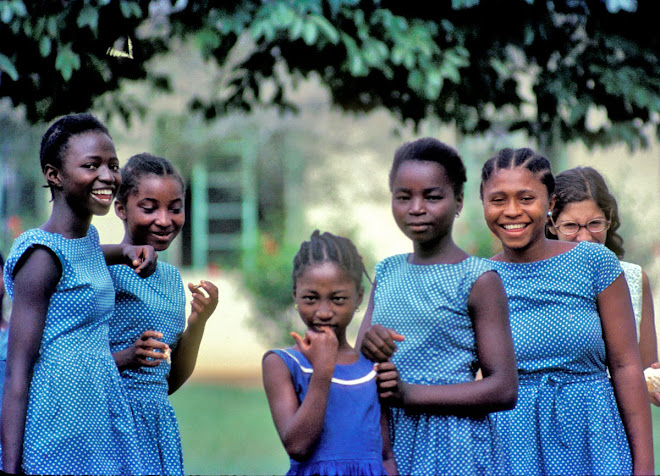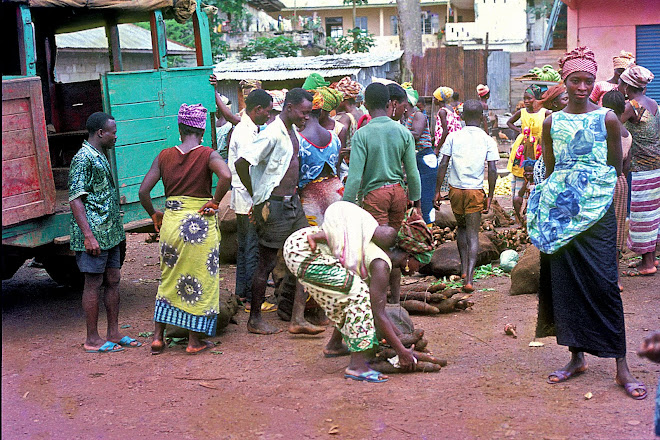HOLY ROSARY SECONDARY SCHOOL - KENEMA: For two months (July 1968 to August 1968) we did in-country training at Freetown and also at the Agricultural University at Njala. This was the first in-country training program in the Peace Corps. It was late in the day on July 5, 1968 that we arrived in Freetown - and our greeting there was less than warm. As our plane skirted the West African coast Lungi Airport (the Freetown International Airport) refused us landing privileges. It seems that there had been a Coup and as a result the government of Sierra Leone was apprehensive about letting foreigners into the country. We were a group of about 150 volunteers - and the Sierra Leone Peace Corps program had been one of the first. It was in 1961, just after Sierra Leone won its independence from Great Britain, that Peace Corps came to the country. John Kennedy had issued the call and Sierra Leone had opened its doors. The Peace Corps had had some success there. However in April of 1968 Siaka Stevens and his APC party took control of the government. It was under this period of flux that our pilot had been refused landing rights. However, it turns out that our pilot had flown for the CIA, and we were in a World Airways plane - which had its roots somewhere in the interstices of this organization (we were only later to learn this). Without guidance, and with boldness, the pilot did not heed Sierra Leone orders and by mid-afternoon our plane lay motionless on the Lungi tarmac surrounded by soldiers directing their machine guns at our plane. And there we stayed for some 6 hours, in tropical downpour after tropical downpour, waiting to disembark. It was very humid. The pilot negotiated by radio with the soldiers. At one point the soldiers came on our plane, their machine guns drawn just to check us out. As naive Peace Corps volunteers none of us (perhaps except Sierra Leone Peace Corps Director Joe Kennedy - no relationship to the president) realized what was going on. It was somewhat of a party atmosphere on the plane - all of us assuming that this was how Africa worked and we had to be patient. It was well into the evening hours when we finally were allowed to get off the plane. It was steamy as we all got on transports and were driven (by 11:30 at night) up to Fourah Bay College. At Fourah Bay we were given sheets, a towel, and assigned to dorm rooms. Needless to say we were tired by the full day of travel, the excitement of finally arriving in-country, and the excitement at the airport. We were later to learn the next day that the local Freetown papers (Daily Mail, Unity, etc) were describing us as an invasion of white mercenaries - a label that lasted only briefly as the transient xenophobia following the recent coup dissolved. Up at Fourah Bay we awoke to a sunny but humid morning, early meetings in which we were greeted by officers of the Sierra Leone education department. I remember how they praised President John Kennedy, and also Robert Kennedy, and how they welcomed us to their country. This was very reassuring. At this time we also continued our Peace Corps orientation driven by the program administrators including Joe Kennedy (Peace Corps Director in Sierra Leone) and by the Peace Corps doctor who advised us on health issues. Some of his advice was embarrassing - I did not sense that he had a good appreciation of the country and this was borne out by my later experience. We also started 4 hrs of daily language training with Sierra Leone college students. Our teacher was Francis Baryoh - who despite our initial confusion made the language come easily and made it fun. Francis was from the far east - he was of the Kissi ethnic group - and for a while lived in Kenema. He was a Fourah Bay College student. I also remember a teacher named Clifford Roberts. There were others as well. They used the Rassias method of language teaching - and for me it worked. The program had also set up a special summer school for all of us to practice our teaching. For Susan - who had already obtained teaching certification while at Smith - this was easy. For me - it was challenging. I was assigned to teach math and science. Susan was assigned to teach English (and history). After one week at Fourah Bay we moved to homes and our in-country hosts in Freetown. Susan and I were hosted by Mrs. Lottie Nelson-Williams a Krio family living at 77 Pademba Rd in central Freetown. Our quarters were nice if not Spartan. Next door other Peace Corps volunteers lived. The house itself was probably built in the early 1900s, was wooden, was 3 floors, and had a nice porch attached to our room and from which we could look out on the busy street. Downstairs was a photo shop. Mrs. Nelson-Williams husband was at Pademba Road prison having been jailed as a political prisoner in the recent Coup. She never talked about him while we were there. There were about 9 children living in the house as well. Each morning - Monday through Saturday we headed to our schools by public transport to do our practice teaching. We slowly adjusted to the food which was laced with hot pepper, looked exotic at the time to us, and took some getting used to. There were the new and exotic smells of Freetown as well especially the smell of burning charcoal from the many kitchen fires. From time to time we went downtown to a Lebanese restaurant that had hamburgers. We traveled on our free-time to Lumley Beach to swim - this beach being on the edge of Freetown. It was a beautiful beach with warm water. At one end of the beach was a hotel that had been built for tourism promotion but by then had never been opened - the coups had taken its toll in this regard. In August we headed to Njala University College probably about 60 miles from Freetown to get training in Agriculture as well as to continue our daily language training. Here we stayed in dorms on this country campus. In mid to late August (1968) we received our assignment at the newly established Catholic Mission Secondary School called Holy Rosary [HRSS] in Kenema in the Eastern Province. After a 6 hour drive by Public Transport we arrived at Kenema Peace Corps headquarters (I think on Konbema Rd) and were greeted by Jim Alrutz the Peace Corps director in the Eastern Province. Jim was helpful, very positive, and a relaxed and wonderful leader. I remember him taking us to the school to meet the Principal - Sister Miriam Joseph. We were the only teachers in this new girl's school and there were to be about 30 students. The Holy Rosary Missionary Sisters were from Ireland. Many had previously been in Nigeria - but had been driven from there with the Biafran War. Other Sisters whom I remember include Sister Kathleen Tolland - a wonderful woman who had given her life to being in Africa and who really respected and admired their ways. There was a mother superior whose name escapes me. Sister Mary Ibar came to teach science in our second year. Susan and I were the only lay teachers at that time. I taught General Science and math (they called it maths). I also introduced a school garden and was assigned by Sr. Miriam Joseph to be netball coach. Both Susan and I also were assigned to teach in the Teacher's Training College - on the same campus. At the TTC we had wonderful soon-to- be teachers in a school that was being fazed out. Our two classes there were the last two years of the program. Many of our students at the TTC were our age or older - they had a wonderful sense of purpose - a wonderful sense of humor - and I am sure many are now leaders of the Sierra Leone community. Some (but not all) of the names that I remember from the TTC include: Dolly Peters, Josephine Jones, Cecilia Jah, Mary John, Juliana Bio, Esther Kajue, Catherine Macavoie, and Anna Clark. From the secondary school there was Sabina Tucker, Aminata Lahai, Princess Bundu, Agnes Bundu, Cecilia Banya, Jalahan Sesay, Mary Fortume, Wuya Coomber, Alawiah Mourtada, Josephine Murray, Kulla Kallon, Elizabeth Karimu, Jeneba Conteh, Cecilia Ngegba, Bernadette Conteh, and Baindu Lansana. Unfortunately there are many others whose names escape me after all these years - however to this day their faces remain familiar. Our first year of teaching was fun although I was not a very good teacher - Susan was. However I enjoyed the students. They were bright if not yet academic. They were fun to teach as their sense of humor made going to school each day that much more enjoyable. At HRSS most but not all of the students were from family's of moderate means. School fees were steep. Kids wore maroon (with yellow ribbon) school uniforms. There was a mix of ethnic groups as students came from other areas - this included predominance of Mendes, but also Temnes, Susus, and a few Lebanese. Classes were taught in English although from time to time I would slip in some Krio, or some Mende (and sometimes even a few expressions in Temne that I had learned). The students giggled when I did this - I think they enjoyed my efforts. I also - as noted - was the netball coach - a sport resembling basketball. I also directed a Track and Field program and ran a field day track meet. My students were very competitive and athletic although not very serious. One of their cheers: "We win them for nothing," I found somewhat amusing but with a basic truth deep down. I taught them a ridiculous cheer that I pulled somewhere from the depths of my past experience: "itsy-bitsy wooten-dotten bo-bo ski watten-dotten bo-bo ski-watten-dotten eh-eh-eh-eh." They loved this and shouted it out loudly - dancing about as they shouted it out after each match. What fun. Our netball teams met with some success - we traveled to Pujehun in the Southern Province to play the TTC college there and to play the HRSS-Pujehun. I think we split the two games there. Their success had little to do with me however since I knew little of the game (as Sister Miriam Joseph had given me a book of rules on that first day). Our house was in a corner of the school compound - and was a well-kept out cement blocked structure with a central room off of which there were 4 small rooms. One room became our store room, one our bedroom, one a guest room, and one - equipped with a bath tub we used for laundry. Outside was a nice kitchen although not modern, an outdoor shower (gravity fed), and a toilet. On our 3rd night there we were broken into and robbed. We had been away on that evening - invited by a Peace Corps couple, Margaret and Mark Davis to eat supper with them. I remember walking home (about a mile) in the pitch black to our house, and being awoken by hearing a noise and seeing a shadow of a man backing out of our room. I screamed and briefly the man fled, only to return and make threatening gestures at me with what looked like a knife. I grabbed his arms and pushed him into the door to our room - and he fled. However he had taken a tape recorder and a few other items. He had broken through our store room window to get in. I wondered if he had done this while we were away and had returned after we went to sleep. My cameras - which had been placed in plastic containers in order to reduce humidity exposure were left behind. As he fled I called out in the night for help and help came from our neighbors the Garloughs. We did not know them but it was Pa Garlough who came in his wrap to help us. The next day his daughter, Elizabeth and his wife, Sabina came and introduced themselves to us. They brought us food, "since we had lost everything." This family rapidly became our friends. Of the robbery - I was discouraged and for several nights Jim Alrutz (the Eastern Province Peace Corps director) put us up at his house. However this was not the only attempt to break in to our house. We were also not the only houses in our area that the night prowlers broke in to. For "protection," I obtained a starters pistol (for track and field) from the school store room and used it when I heard robbers outside our house. The noise of the pistol worked frightening away any of the unwanted visitors. This was to some degree something that we had to learn to live with, and certainly it was something that our neighbors had to put up with. For the most part these crimes were petty, however many times robbers were dealt with with "instant justice," which was not a pretty site.
All photographs are my own and can not be copied or used without permission.
These currently posted images are mainly from the Kenema Area in the Eastern Province of Sierra Leone where we lived. Many are of my Dama Road neighbors, and of our students at the Holy Rosary Secondary School and at the Kenema Teacher's Training College. There are many also from area villages such as Vaama, or Tokpombu, or Bitema, or Gbenderoo, or Foindu. These villages all with less than 100 people in them, all are in the Nongowa Chiefdom in the Kenema District of the Eastern Province of Sierra Leone. All were in walking distance ( 6 miles) of our home. I was lucky to have friends while I lived in Kenema who were willing to show me their villages and teach me about their ways. Kenema was a big town even in those days. Susan and I lived on the HRSS school compound. To this day I appreciate the warmth and friendship of my many friends including Siaka Kpaka, Patrick Garlough, Mama Hokey, the Garlough family (Pa Garlough and his wife Sabina), schoolboys Senesi Edward Lahai, Momo Vandi, and Mansaray Vandi, Mrs. Porter (and her son Bankole), Pa Sam of Vaama (and his wife Massa), and also of our many students both at Kenema Holy Rosary Secondary School (HRSS) and at the Kenema Teacher's Training College. One of our mentors while there was a woman named Mama Hokey Kemoh. She lived across from us at #55 Dama Road. In those days she was the area leader of the Bondo Society (Sowei). She was a regal woman who befriended us, joked with us, and taught us about what it was like to be a Mende woman. Many a night was spent on her veranda listening to a woman named Bonya lead beautiful Mende songs, while other women responded with incredibly beautiful harmony. Some nights this would be to a full moon, and other nights there would be rain beating down on the metal roof. It was Mama Hokey who would send for us and allow us to be there and listen, because she knew how very much I loved the wonderful songs and the very haunting harmonies. In many respects Mama Hokey was a surrogate parent to us while we lived there. In those days I smoked a pipe and thus she nicknamed me "Shmoku Pipee." Mama Hokey also nicknamed a young child living in her household as Hokey "Kpokpoi" - and called her my sister. My sense was that the word kpokpoi (?sp) meant chin in Mende and that Mama Hokey felt that this young girl with the prominent chin looked like me. I am aware as of 2008 that Mama Hokey is still alive, living back in her village of Foindu (Nongowa), but is blind.
There are also many pictures from other parts of the country including my two trips to the Loma Mountains and Bintimani, with many photos from the Kuranko village of Sokurella (?sp) at the base of Bintimani. I made two difficult treks to this area in March 1969 and again in March 1970 to hike in the Loma Mountain range - the highest mountains in West Africa outside of Mt. Cameroon.
In the period 1968 - 70 in Sierra Leone there was some unrest between the two major political parties the SLPP and the APC. We certainly were aware of the issues. However in the last two decades Sierra Leone had a very long, horrendous and very tragic war in which horrific abuses were perpertrated such as the use of child soldiers, mutilations, rape as a politcal policy, this all in a ten years downslide for which, even with the tremendous resilience of its people, may take generations to recover. Sierra Leoneans are indeed a resilient people. They will succeed in rebuilding this once proud and wonderful country. However a generation has been without regular education, has been disrupted by the depravity of the horrible war, and has been dispersed to other parts of the world.
In way of explanation the word BONDO refers to the women's secret society in the area, a society that trained young female initiates to be responsible women in the society. The comprable men's society in our area (Mende) was the PORO society. BINTIMANI is a mountain in the Northern Province of Sierra Leone in the mountain range known as the Loma Mountains. In March of 1969 and again in 1970 I hiked in these mountains and stayed in the remote village of Sokurella at the base of Mt. Bintimani. Bintimani is the highest mountain in West Africa outside of Mt. Cameroon. KENEMA was the town where we lived while in the Peace Corps. HRSS refers to the Holy Rosary Secondary School, the school that we were assigned to and where Susan taught English and history, and where I taught math and science, and was assigned to be the netball coach. TTC refers to the teacher's training college in Kenema that we also taught at. I suspect that many of our students are now important leaders in the Sierra Leone community. Then there are the many spirits (called Devils) such as the black raffia BONDO Devil, symbolizing the women's Bondu Society, GOBOI (Mende) and somewhat wild and frenzied secular men's devil, JOBAI (Mende) - also a men's secular devil. I ask any of my Mende friends to excuse any misspellings. I welcome any corrections since it has been 40 years since I have walked in Mendeline. MENDE refers to one of the major ethnic groups in Sierra Leone. We lived in their area. KURANKO refers to a small ethnic group that lived around the Loma Mountains - the village of Sokurella was a Kuranko village. LIMBA is another ethnic group found in Sierra Leone. DAMA ROAD was the road that we lived on and where many of our neighbors and friends lived (this was in Kenema and was a road that headed to Dama Chiefdom). NONGOWA refers to the chiefdom where we lived and where Kenema was the capital.
Lastly let me thank the Sisters of the Holy Rosary who chose us to be part of the first faculty of the Kenema Holy Rosary Secondary School in 1968, and who tolerated having a non-Catholic man teaching on the compound during our two memorable years there. My most memorable teacher colleague among the Sisters was Sister Adrian (Kathleen Toland) who had been in Nigeria before coming to Sierra Leone. Also Sister Mary Ibar (now Sister Celia Doyle) who came in our second year and taught math and science (at least this is what I remember). Both these women were truly dedicated to their teaching and to the students that they taught. Both seemed to have their purpose in perspective and understood that change was in the wind in the 1960's and that Sierra Leone was emerging from its colonial past as it adjusted to Independence. These two dedicated women were able to be flexible and see in their African young women both hope and promise. These were two very Holy women in the best sense of this term.
Monday, September 22, 2008
Saturday, September 20, 2008
WARREN VAN HOOSE was a Peace Corps Volunteer in the group preceding ours. Warren was a big bear of a guy. He came from Tennessee and was assigned to community development in Sierra Leone. He designed the Catholic Mission Hospital at Panguma (Eastern Province). This modern facility was unique in its use of local materials and ideas. Much of the uniqueness of this facility was due to Warren's creativity. There is a photo below of Warren (in the brown tie-dye shirt and big beard) standing with two other volunteers at the celebration of the opening of the hospital. I have learned that during the recent war the hospital was destroyed.
the road from Kabala to Kurobonla - March 1969
FROM KABALA TO KUROBONLA: This road was rough and from time to time we had to stand and hold on to the side of the lorry so as to not get banged around. Our public transport was a big truck in which fellow Peace Corps Skip Smith and I were two of about twenty or so people. I remember having to hold on for dear-life as we maneuvered huge road ruts and very marginal bridges. From Kabala to Kurobonla was only 75 miles but from time to time we had to stop as the driver and lorry boys got out to cut small trees down to place as spans across streams. Needless to say, Skip and I walked across these flimsy bridges. We left Kabala early in the morning, and by mid-day we had only traveled about 30 miles. In the back of the lorry - we all were hot (the air temperature hovered in the 90's and the road dust was barely tolerable), and as the road ruts increased, we all were bounced around the interior. I ended up getting large bruises from being bounced off the sides. It was March and near the end of the dry season as we skirted the northern Sierra Leone - Guinea border. The area seemed exotic as we passed through Yalunka Country into the land of the Kuranko. This was the savannah. We were not all that far from the edge of the Sahara I thought. And the road continued to get worse. At some point beyond Falaba and late in the day as the sun was about to go down, our driver stopped the vehicle (he had done so a number of times on this slow roller coaster of a ride across the top of Sierra Leone). In Krio he suggested to Skip and I that we get down and wait on the road while he turned to the North. Skip and I refused. After some negotiation we remained with the transport as the driver headed north on an even worse road. Both Skip and I knew that North meant Guinea, a country that in those days was verbotten for Peace Corps to go since their leader was a socialist (Sekou Turey) and we had no visas to enter. At the border the driver gave us one more chance - we again refused to get off. By this time it was pitch black and we were on the frontier. Pictures of Chariman Mao started to show up on veranda walls (the people thought he was handsome although they knew little of his politics). On we went, passing tiny villages. And then it started to rain. The latterite road - mostly red clay in consistency became muddy and very slippery, and when the lorry could not get traction on a steep incline, the driver got out, announced that the ride was over for the night (and that we were in Guinea), and that he would find us a place to sleep for the night. Then to our surprise, the floor of our truck was taken down, and contraband was removed from this false floor. Not only were we illegal now in Guinea, but we found us to be part of a smuggling ring bringing fine clothes from Paris to remote Guinea where legal imports were clothing from Bulgaria that upcountry folks just didn't like understandably. We had been duped. The driver did find us a place to stay as promised, in a mud hut in a tiny Guinean village whose name I can not retrieve. Our bed was made of sticks, the room was musty, and we slept poorly with our driver and his lorry-boys as roommates. In the foggy morning to follow I awoke and walked about a bit - took a few pictures of this remote frontier village in Guinea - and then we left. With luck there had been no official border crossing. There had been no one to check in with. We passed across the border back into Sierra Leone without a hitch, the lorry turning and continuing east as we headed on the marginal Kabala to Kurobonla road again. The driver had been honest with us (he promised he would get us to Kurobonla at some time) and by mid-day and some 28 hours after leaving Kabala, we arrived. Skip was in better shape than I was. I had huge welts on my back from being banged around the interior of the lorry. I had also not slept well and was exhausted, probably dehydrated, and just done in by this 28 hours of travel. In Kurobonla we found quarters in a poorly equipped health clinic at the edge of this small Kuranko town. It was here that we negotiated with the Paramount Chief (I think named Chief Kewulé Marrah) for permission to hike into the Loma Mountains and climb Bintimani. It was with him that we also obtained a guide. After an overnight in Kurobonla we headed into the high grass of this area and trekked on through intense heat and humidity to our next destination - the village of Sokurella.
Thursday, September 18, 2008
I plan to add photos daily until most of my photos of Sierra Leone 1968-70 are copied. These photos are a mix from our Kenema area experience in Mendeland, to our travels in Sierra Leone including Freetown, travel to the north to Makeni, and my trek each March to the mountains (Bintimani) of the north - with stays in the village of Sokurella - the last village on this annual trek before hiking to the summit.
Subscribe to:
Posts (Atom)



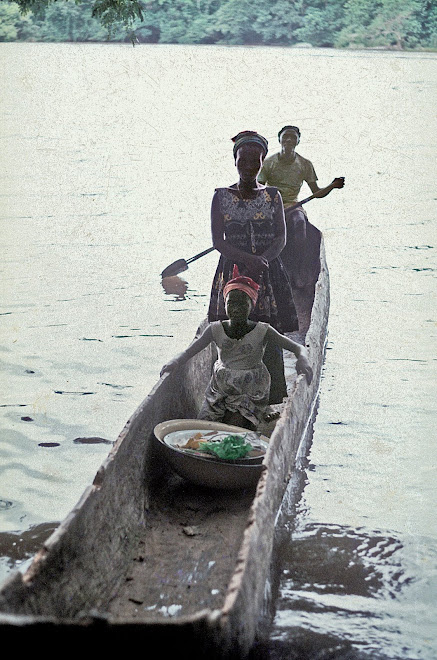
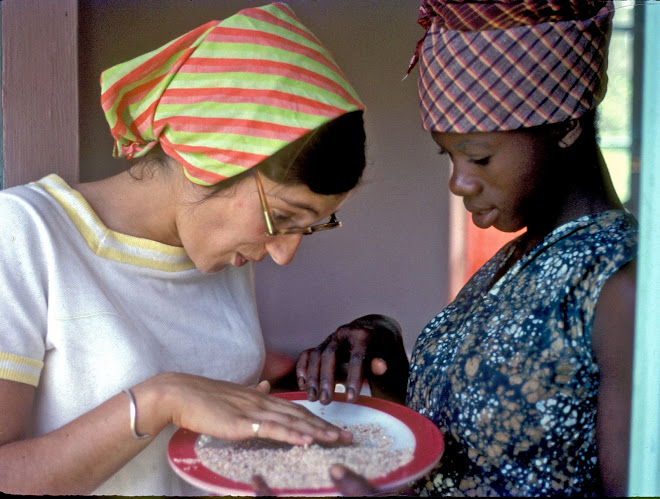







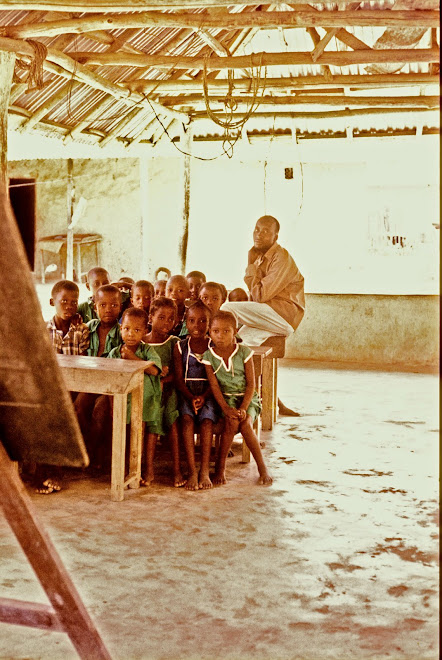
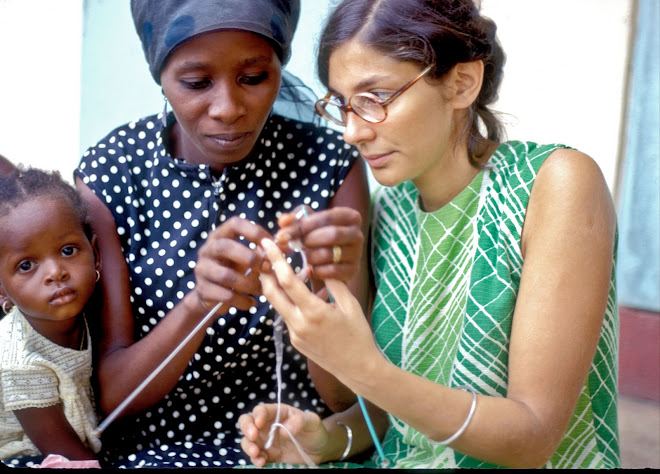
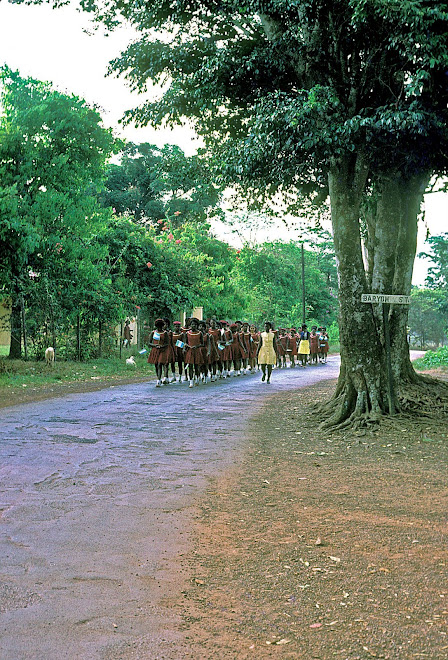


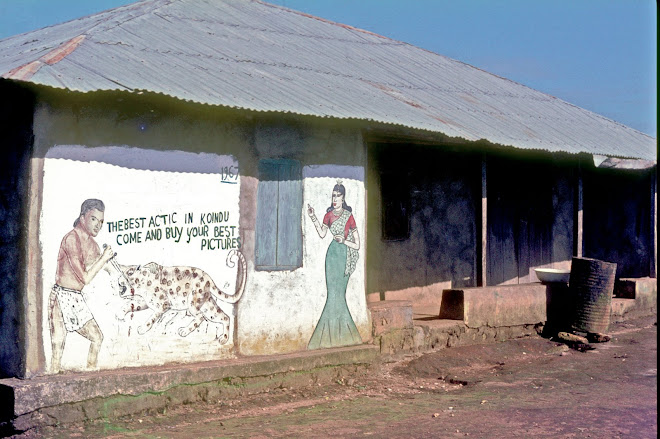


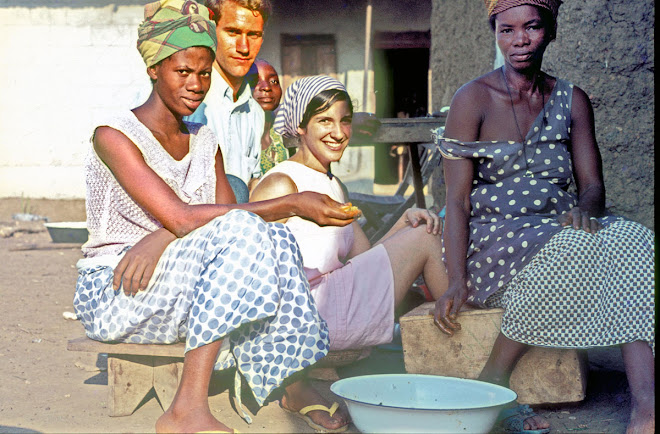
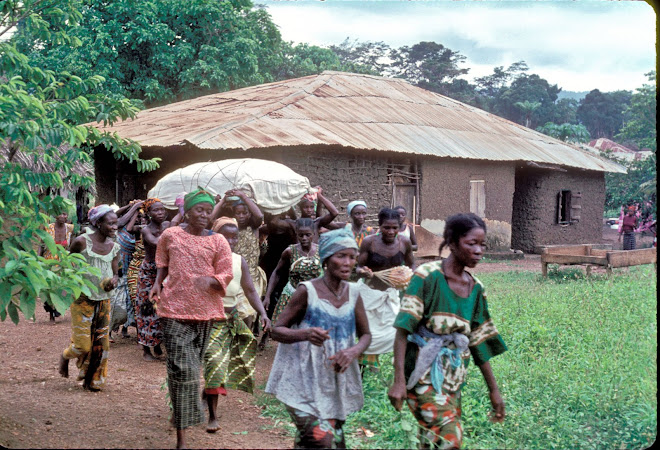

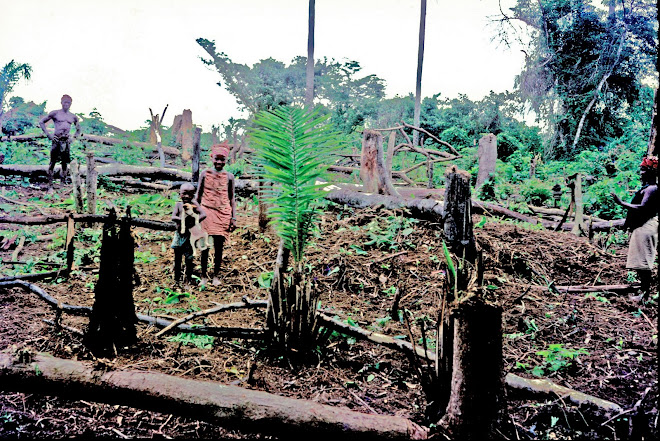
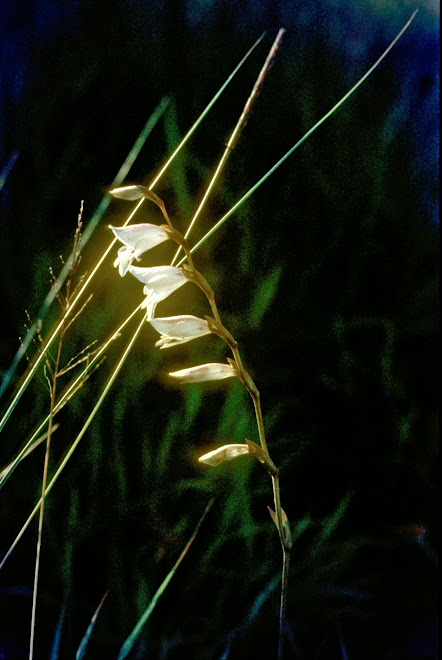
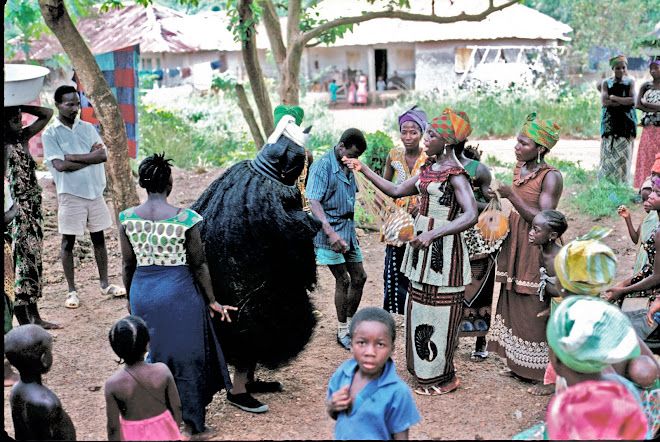

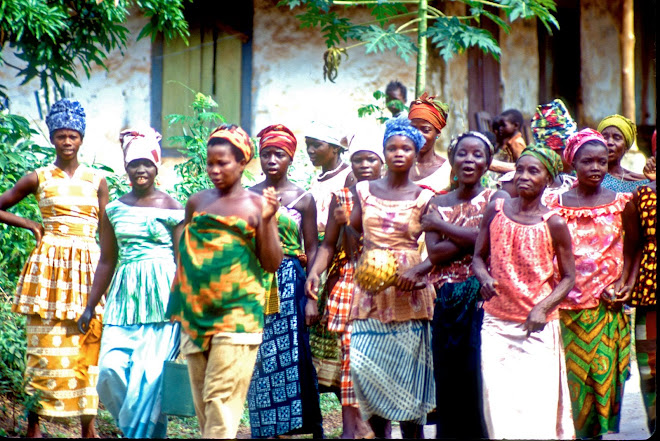
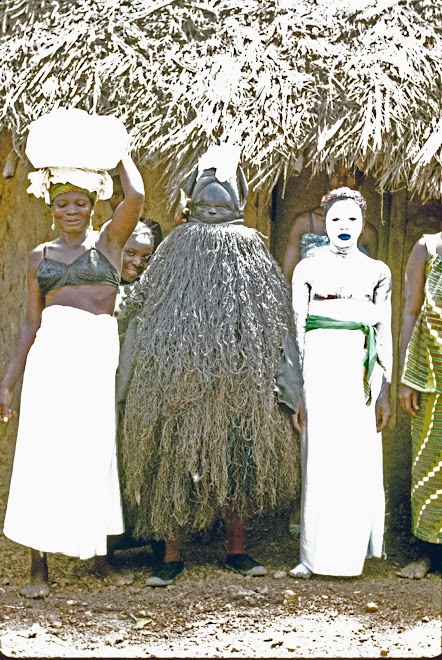


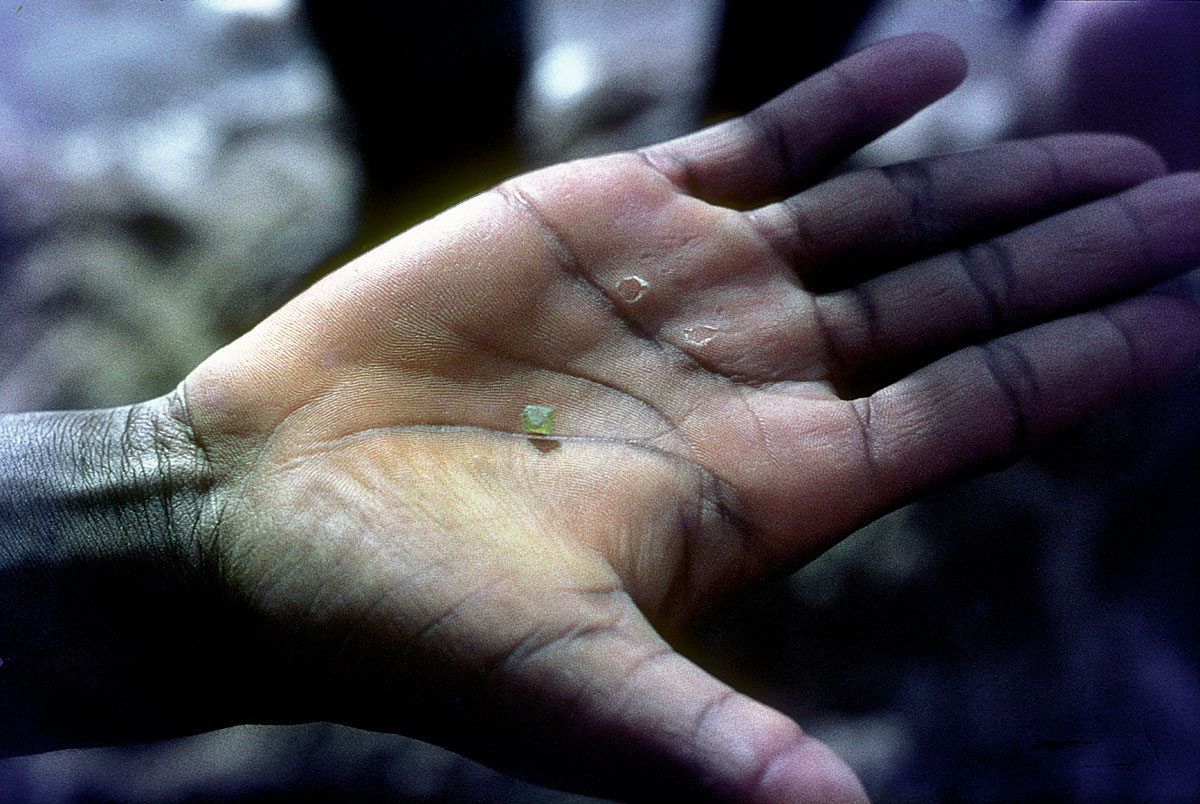
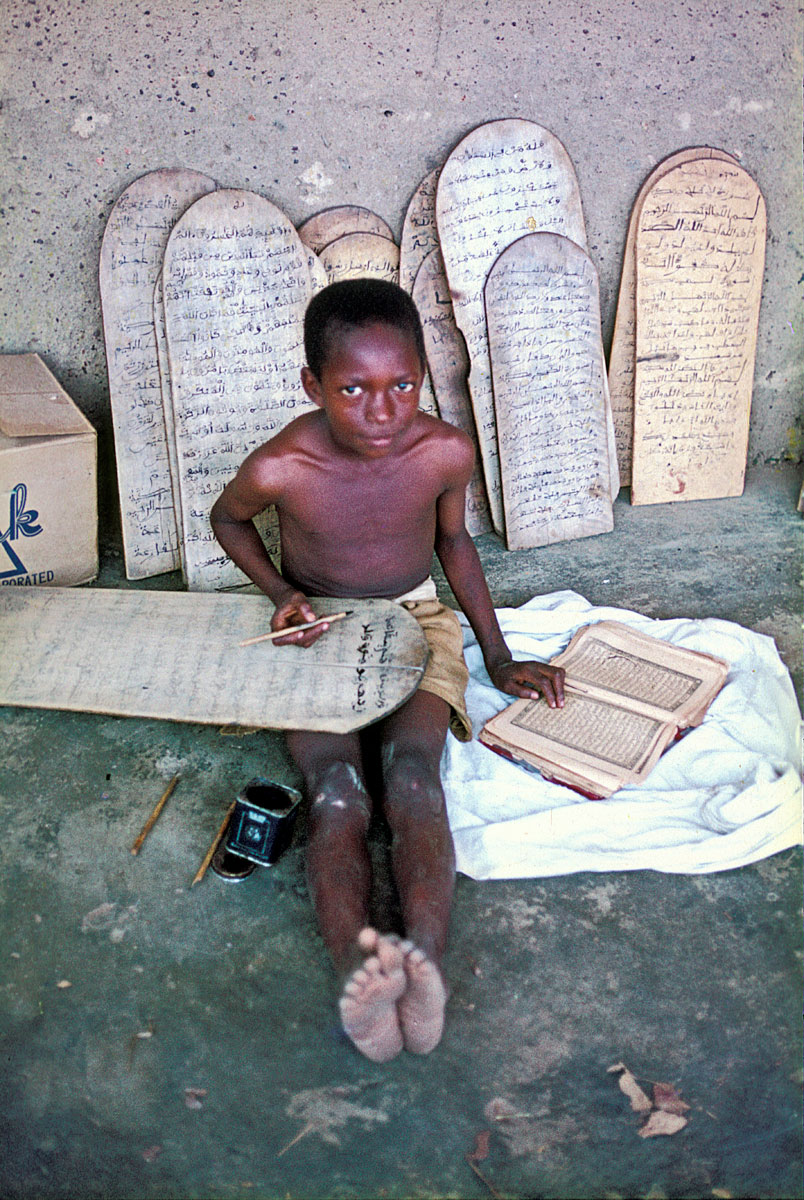


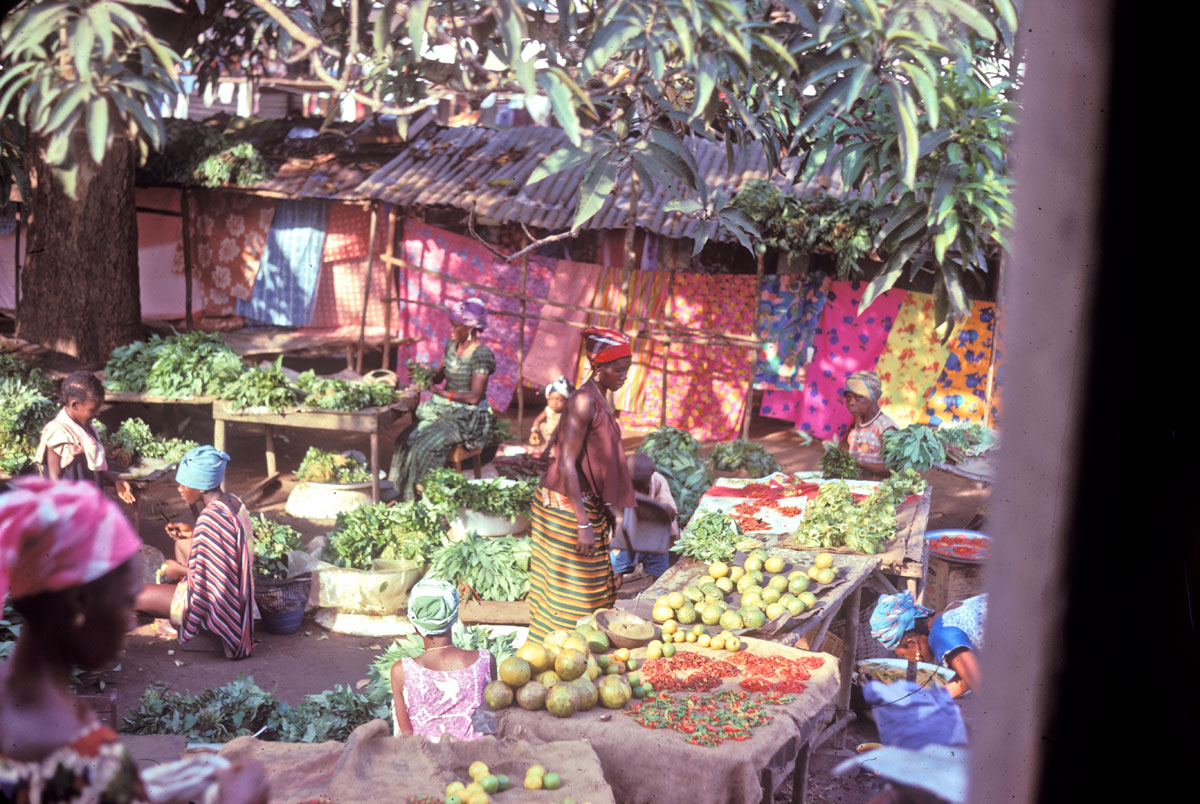

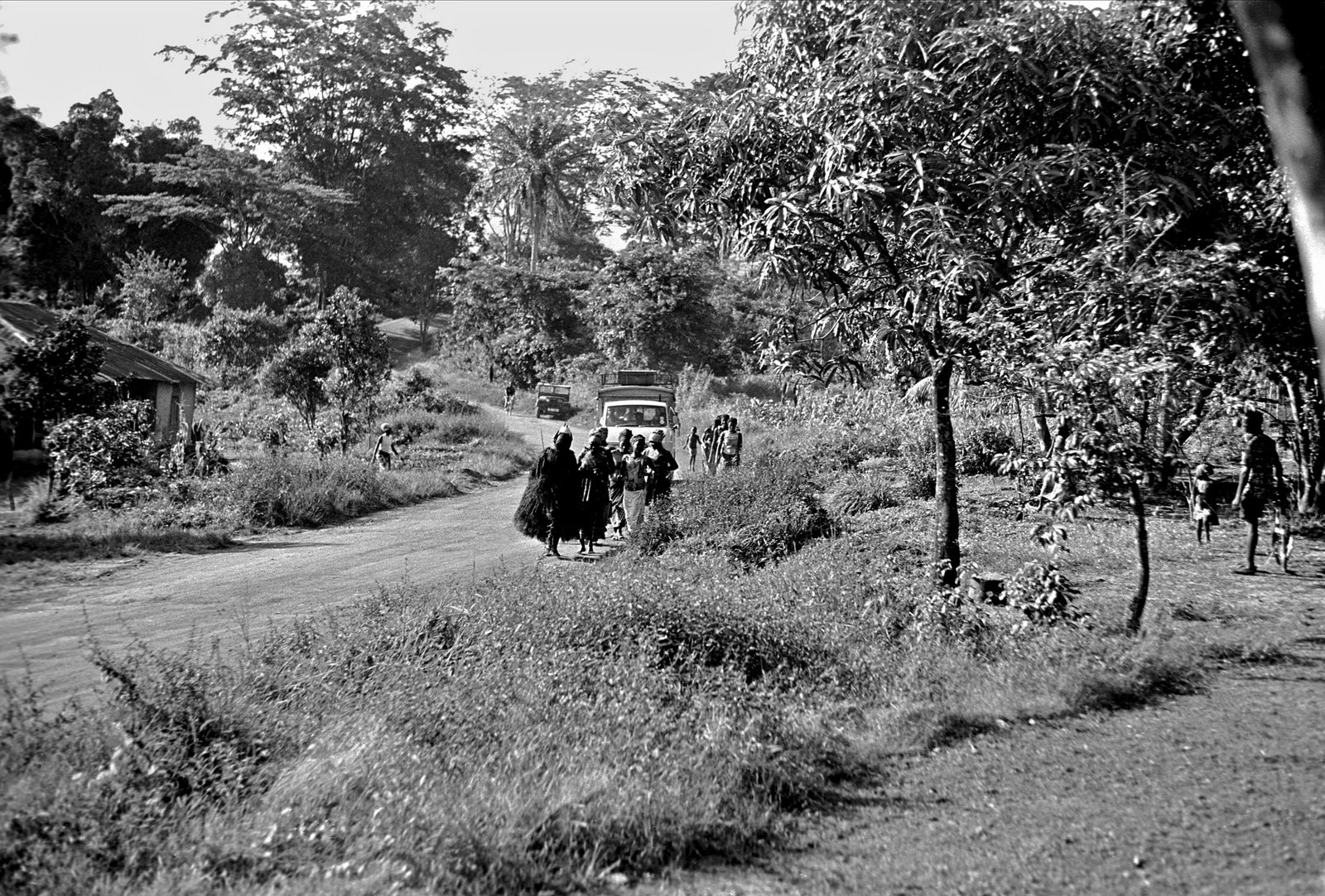
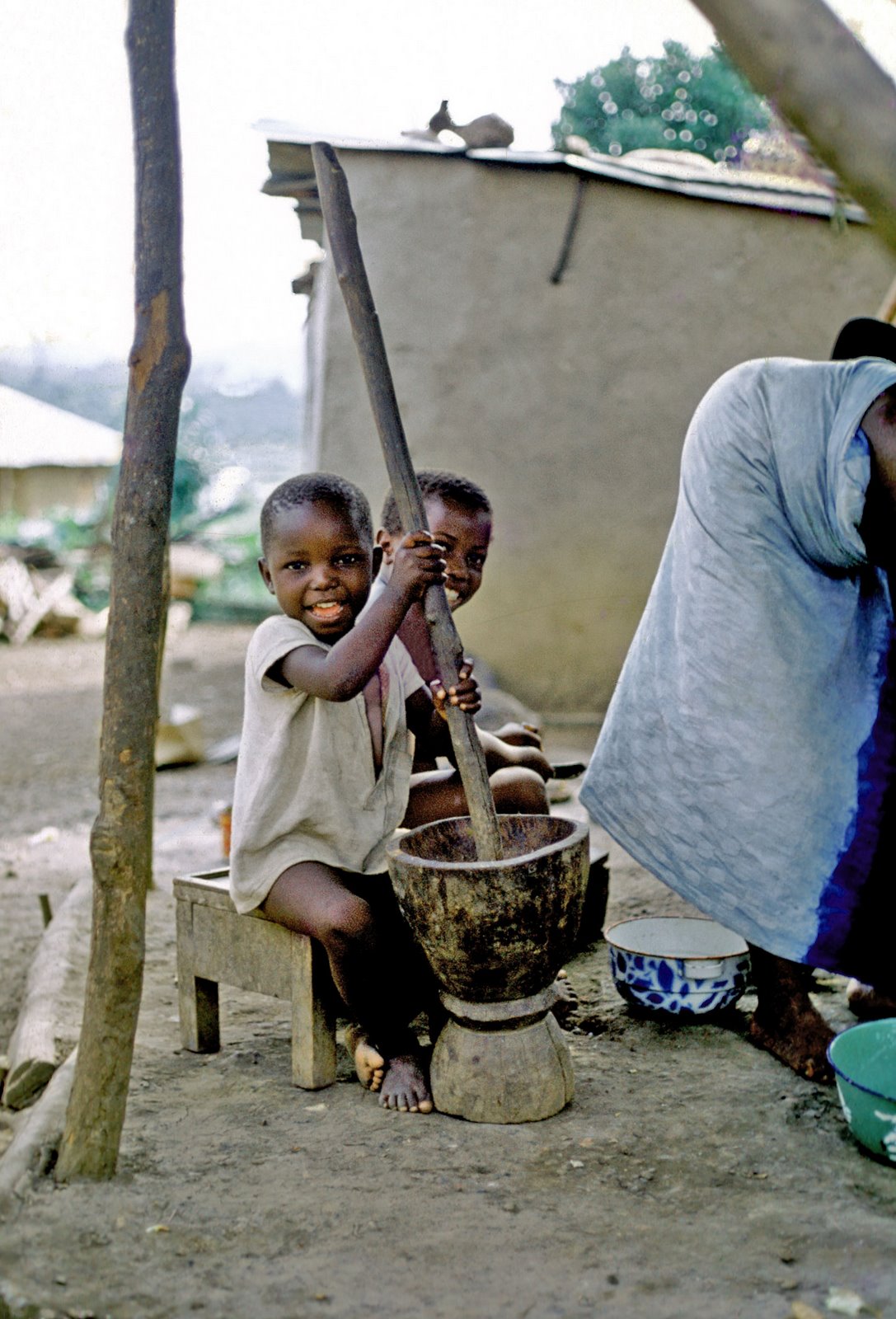


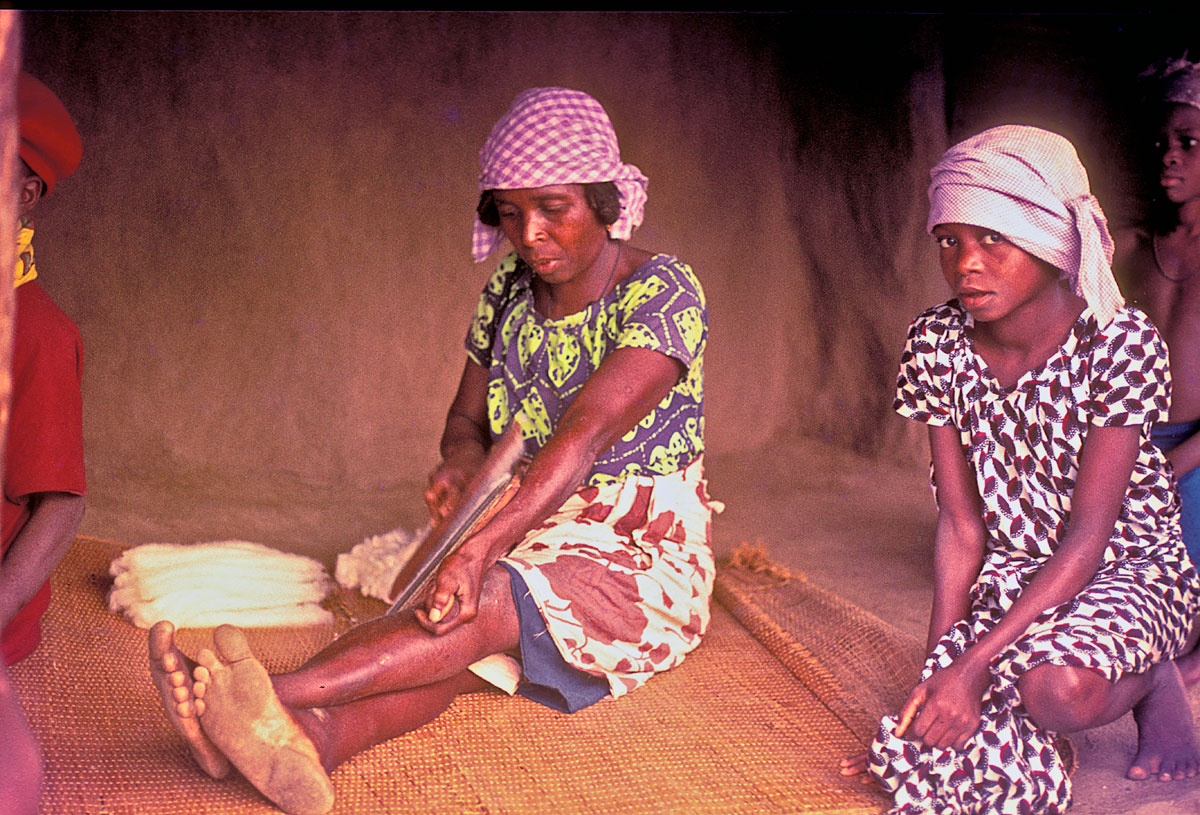


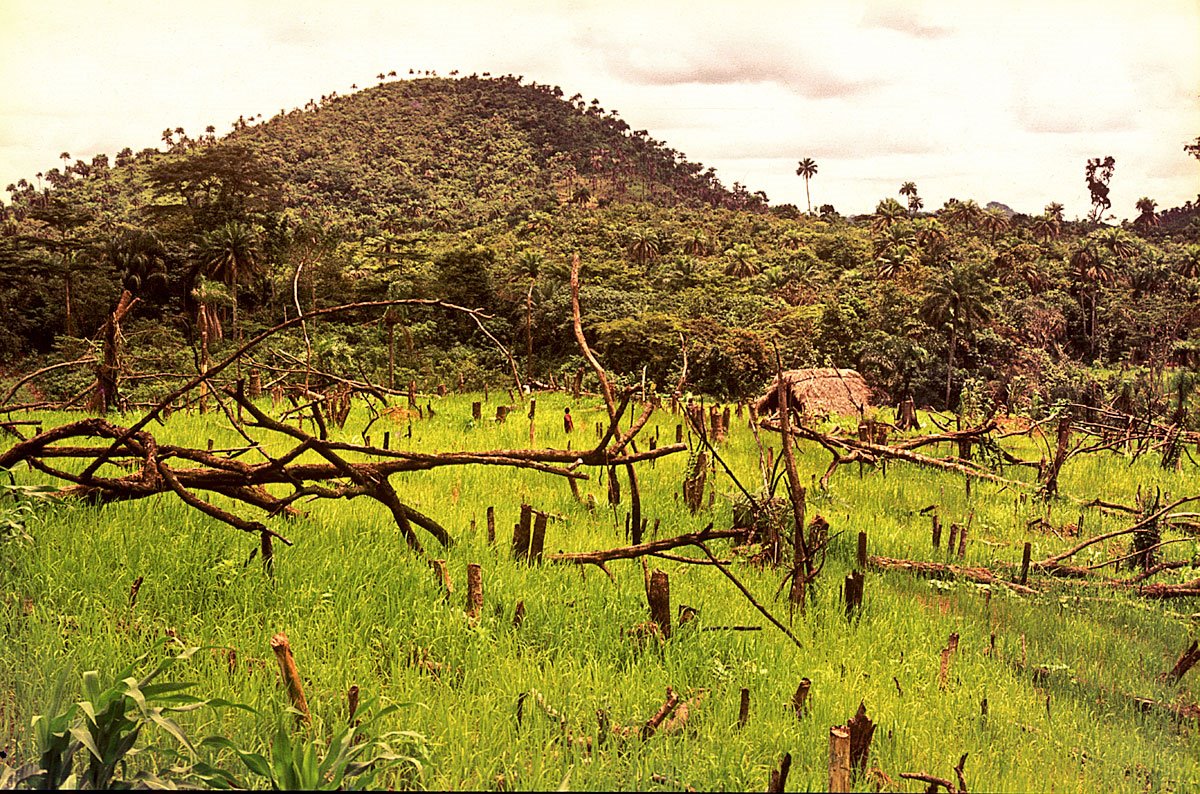


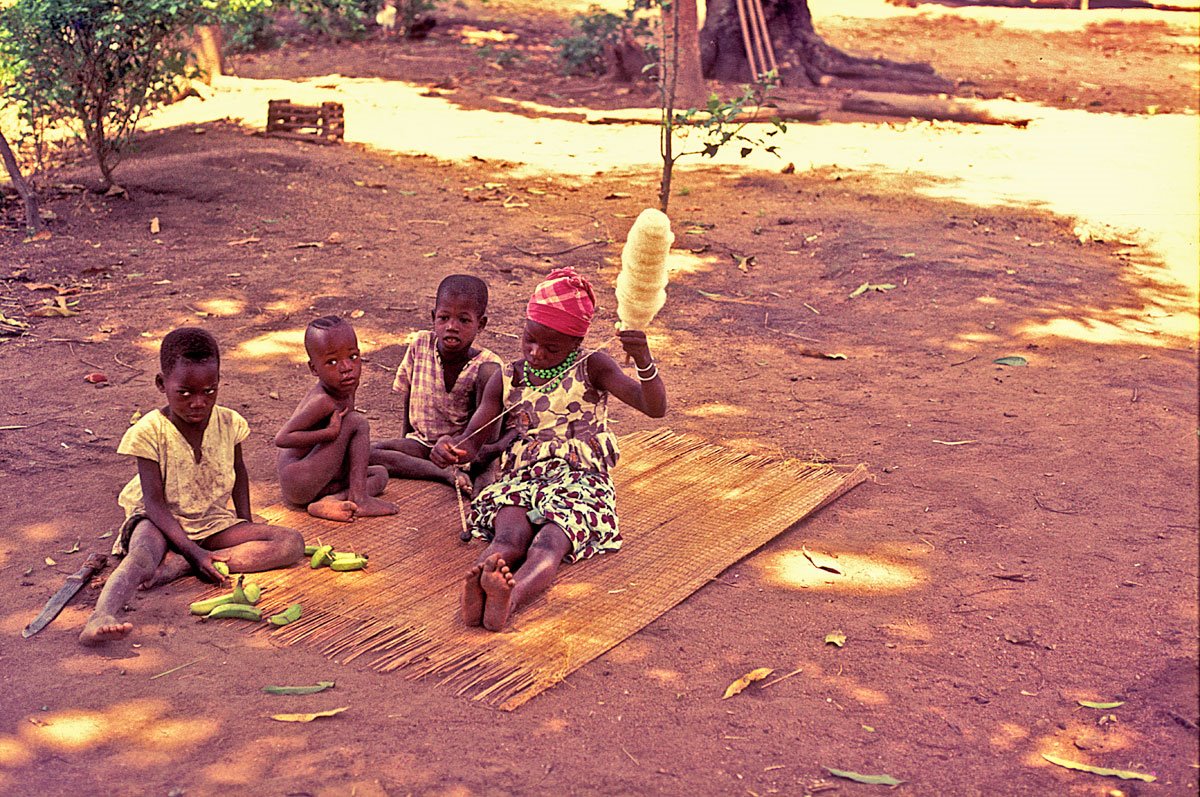

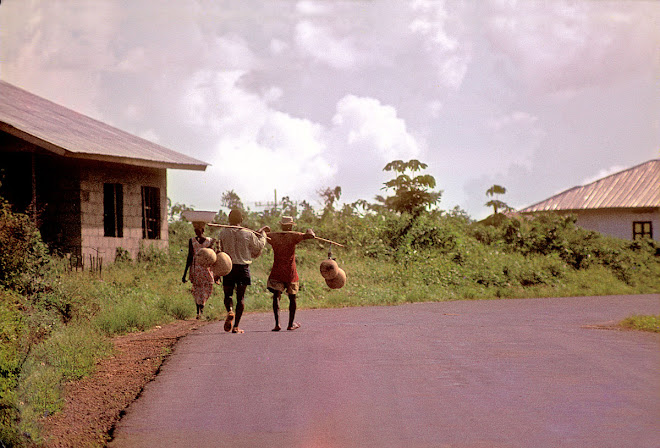

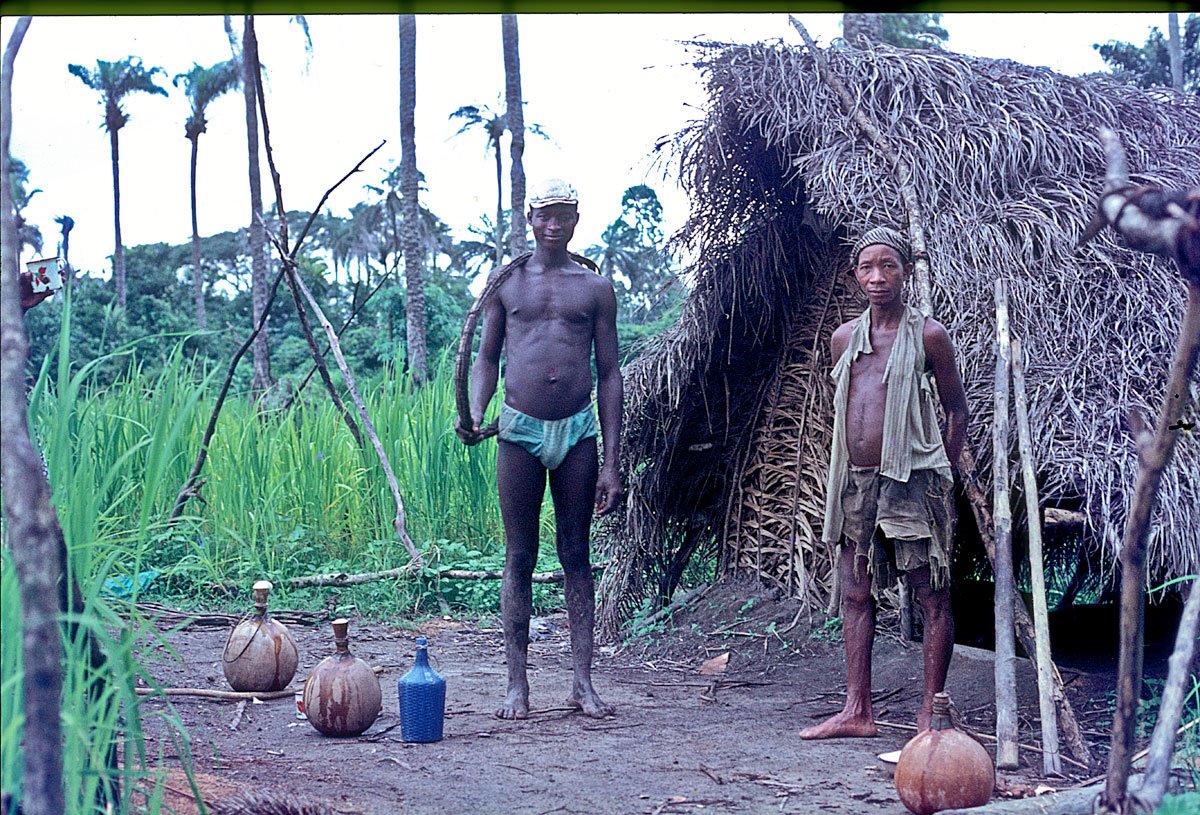

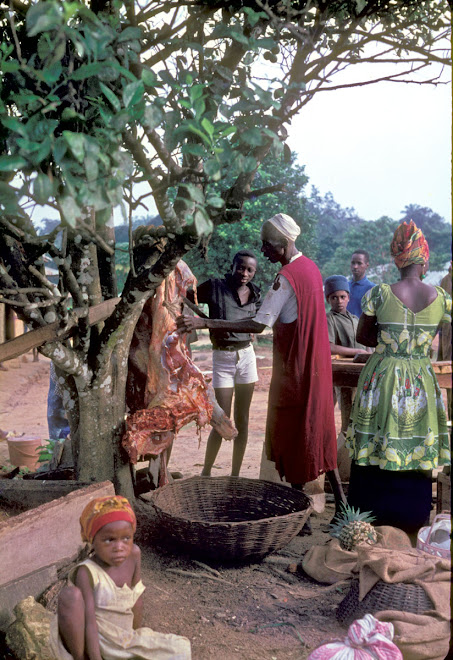

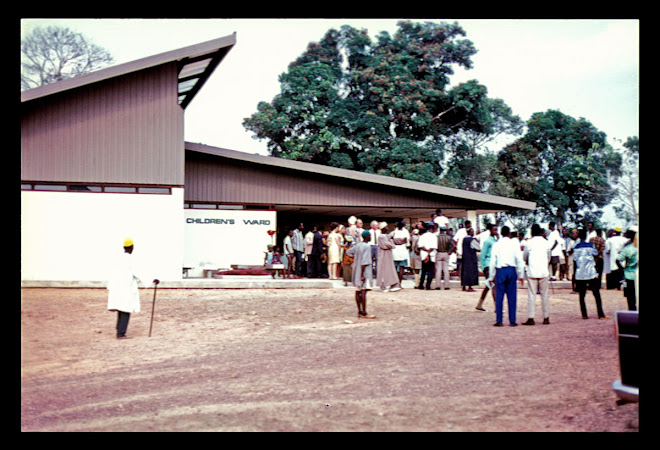

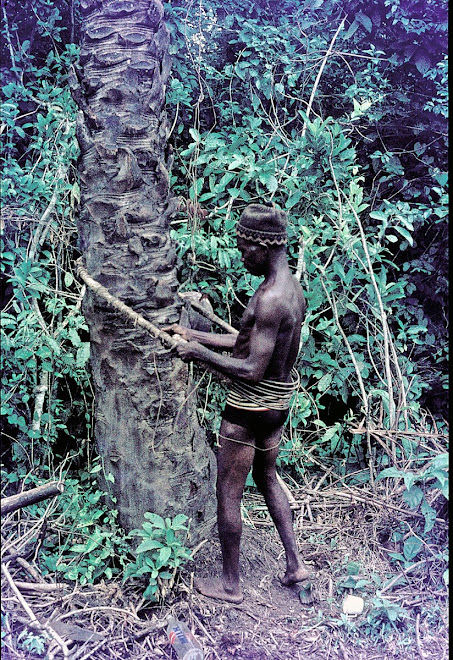




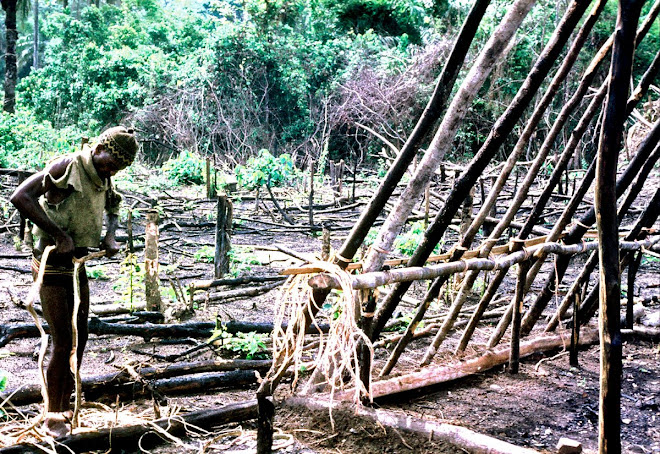
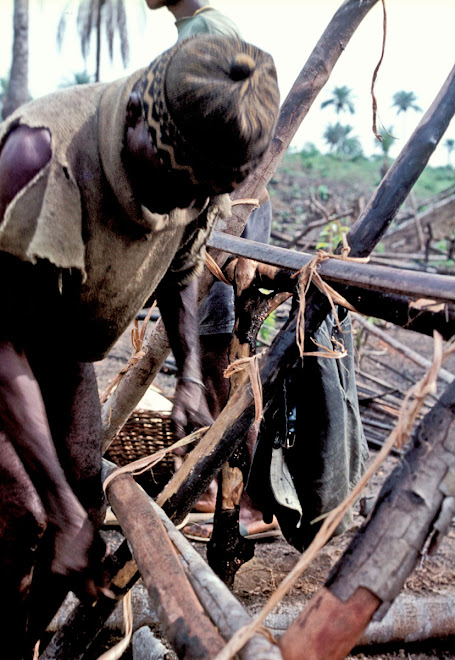


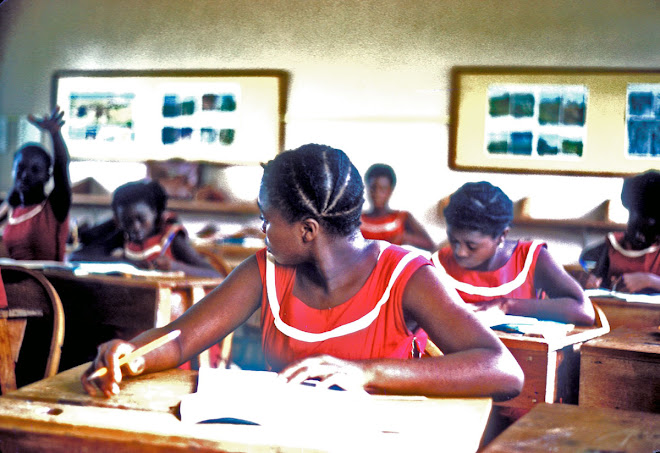
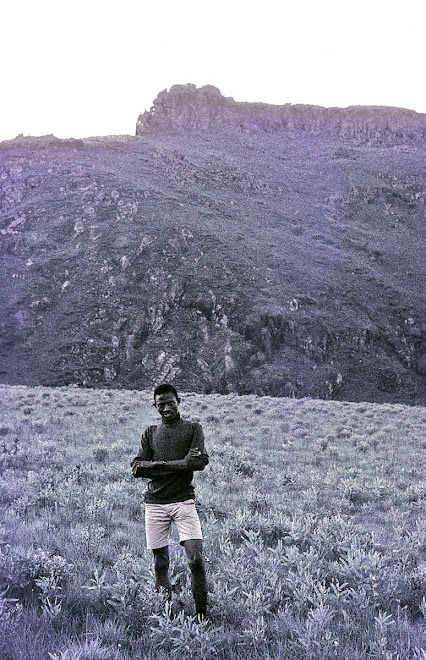

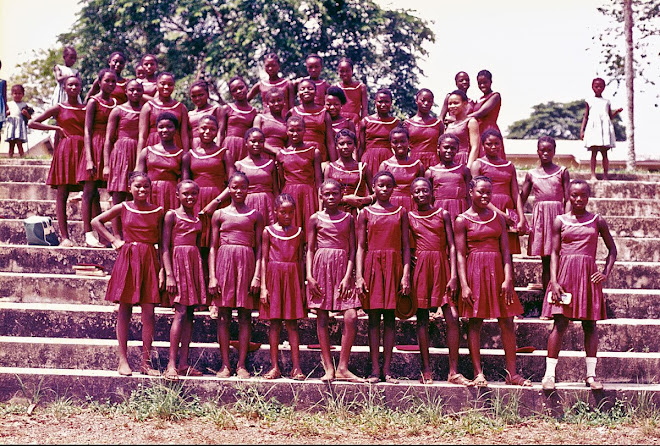.jpg)
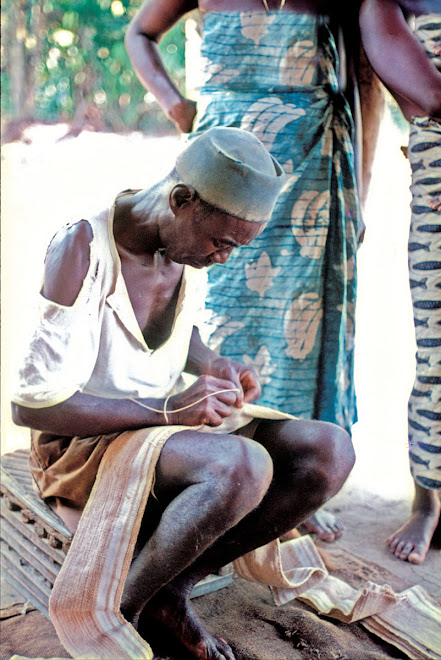
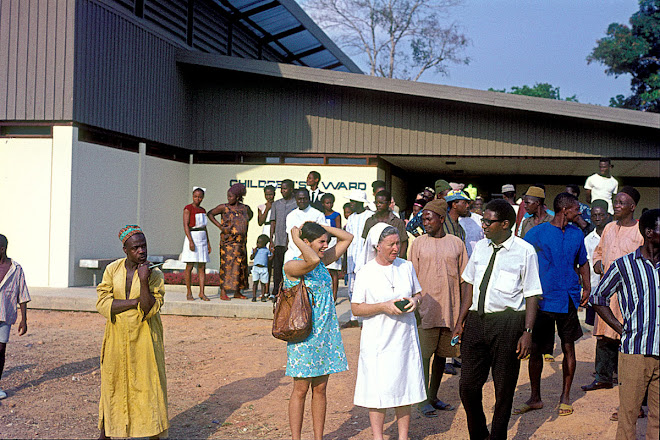


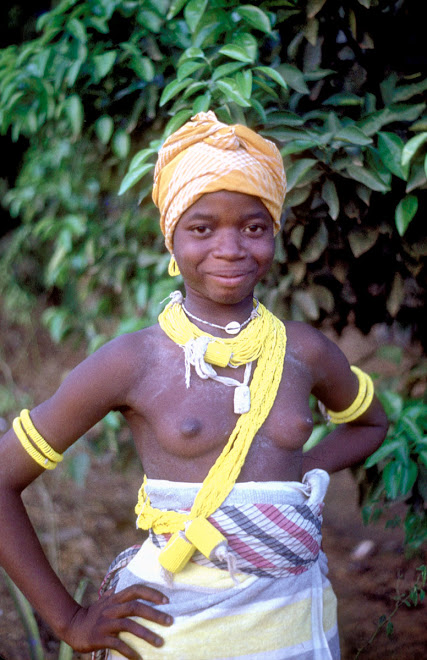
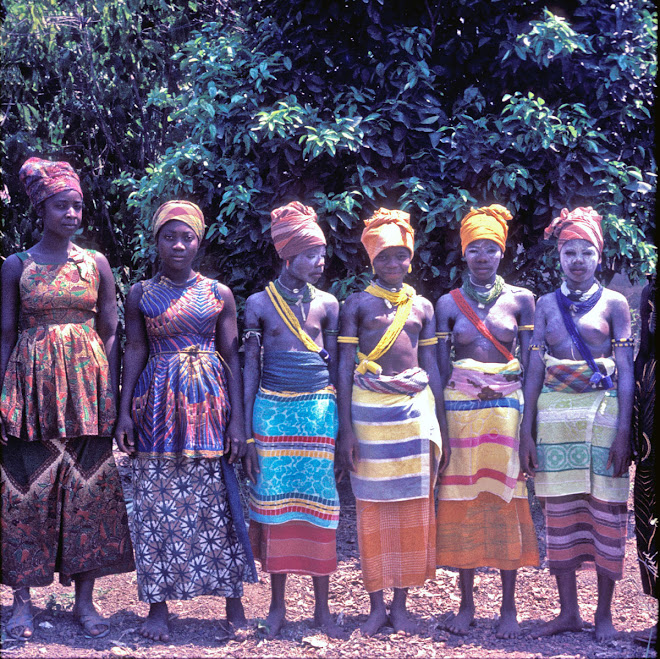
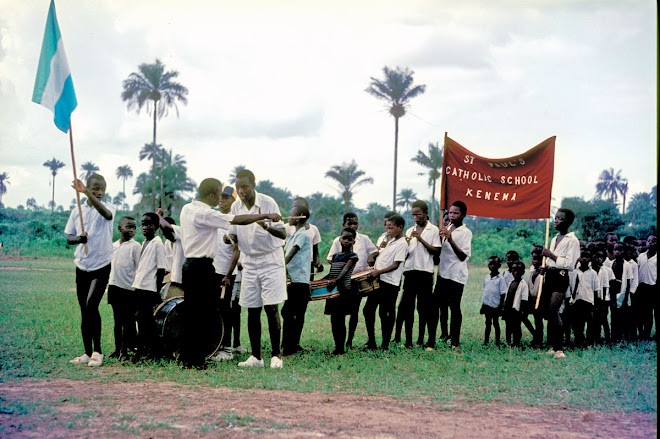





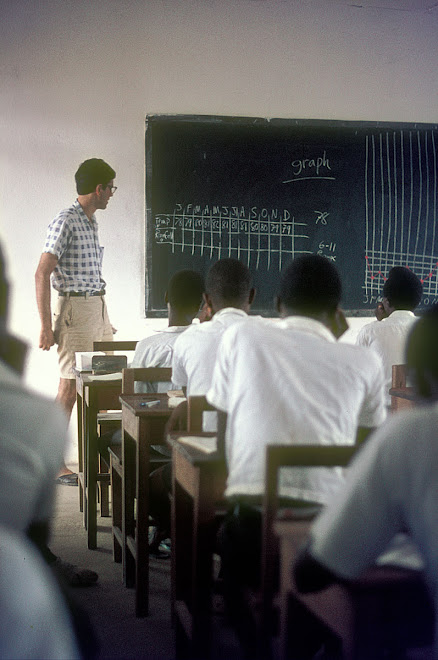
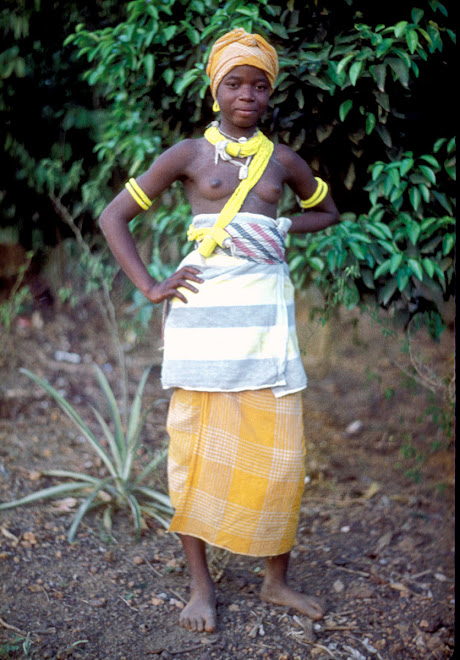
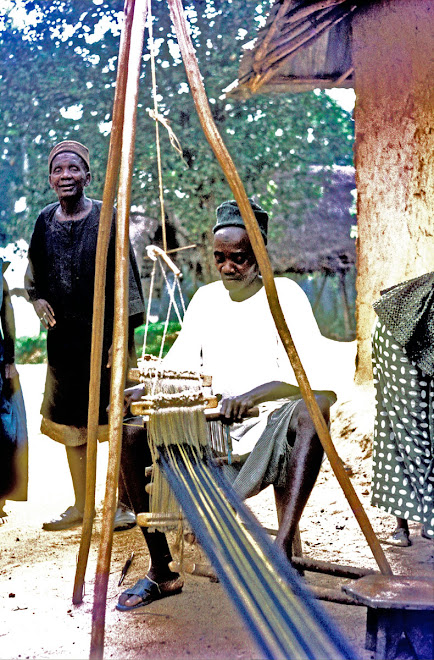




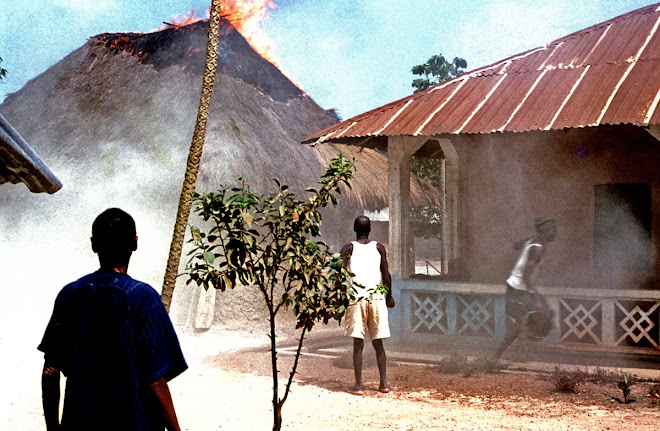




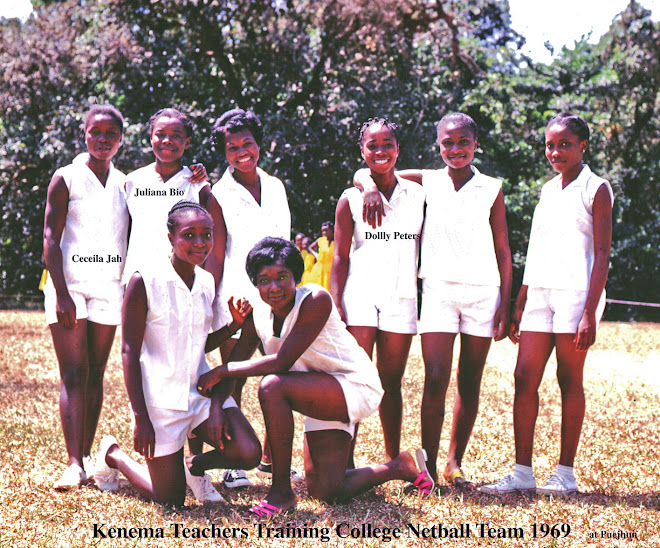
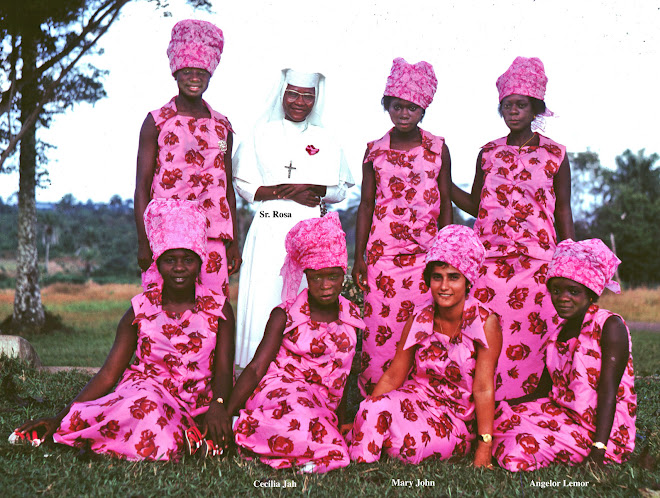
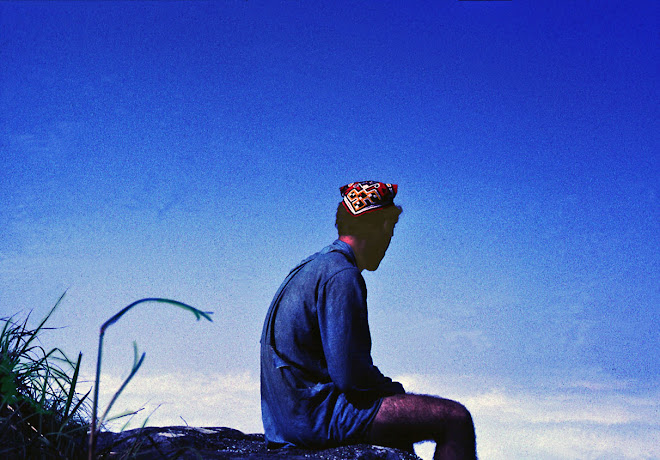
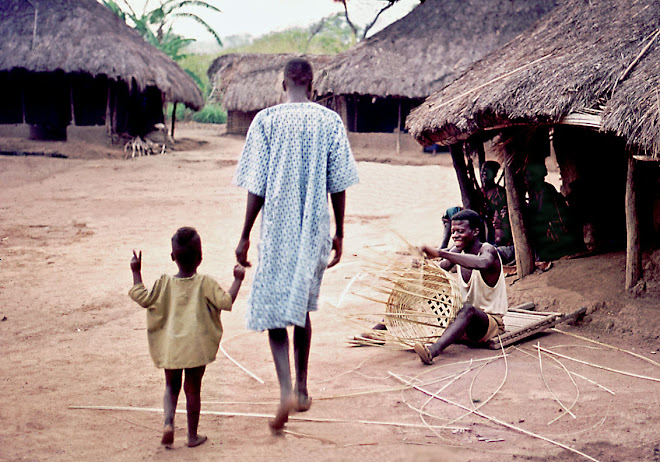
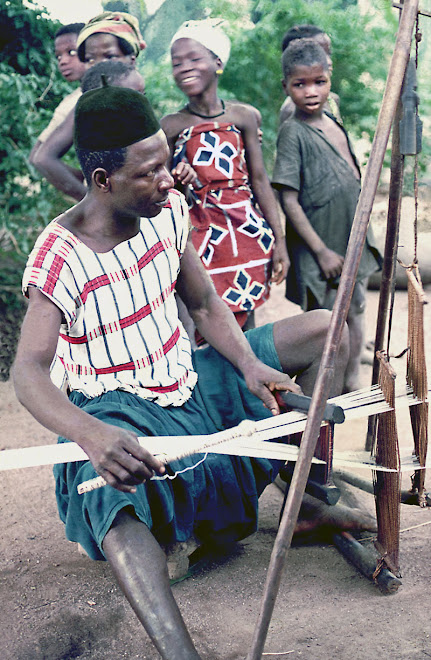

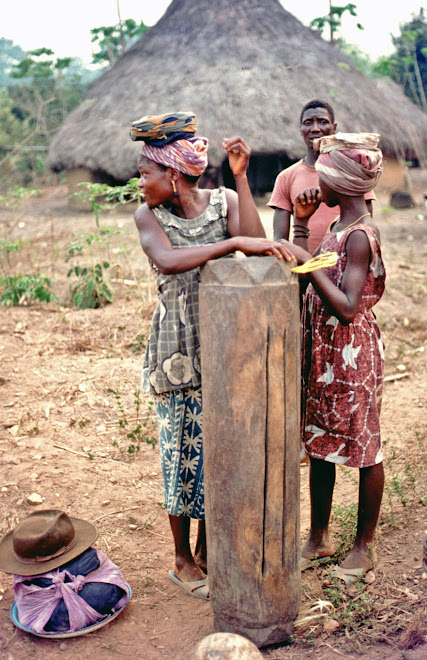
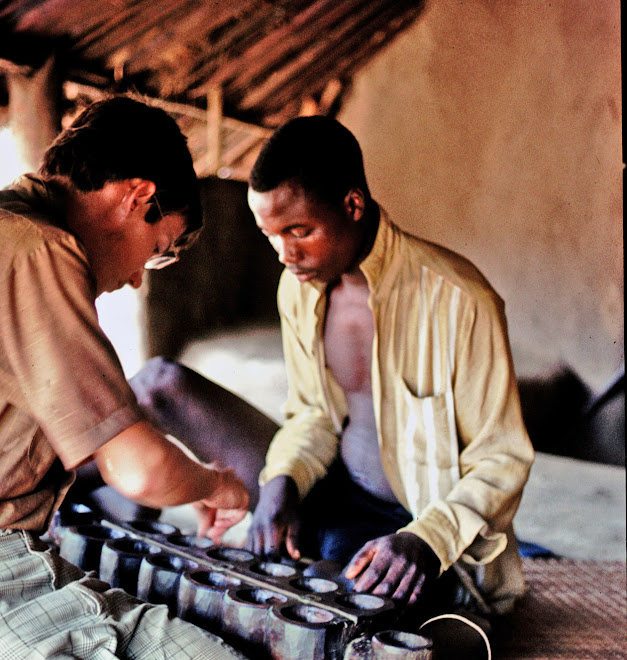

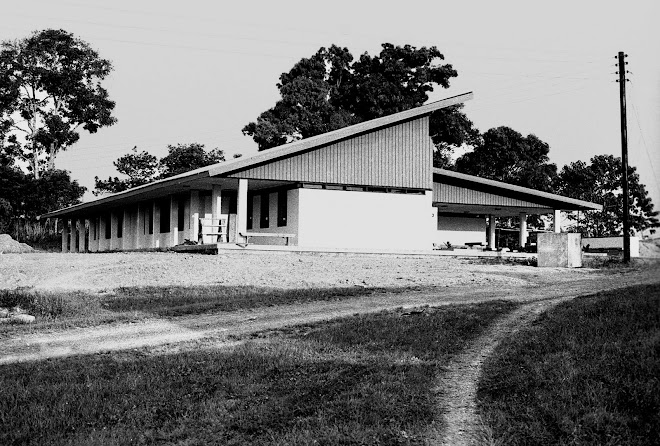


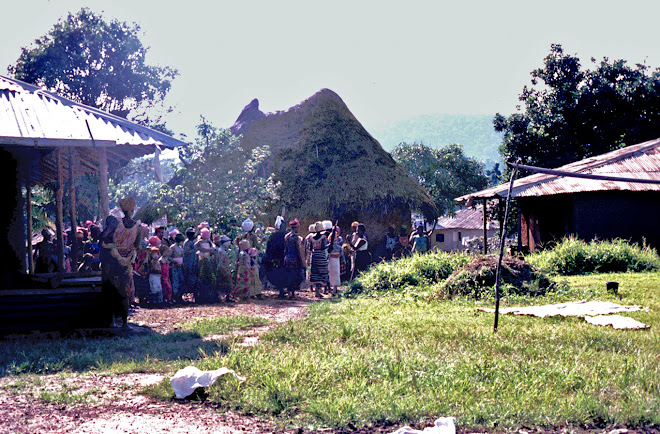

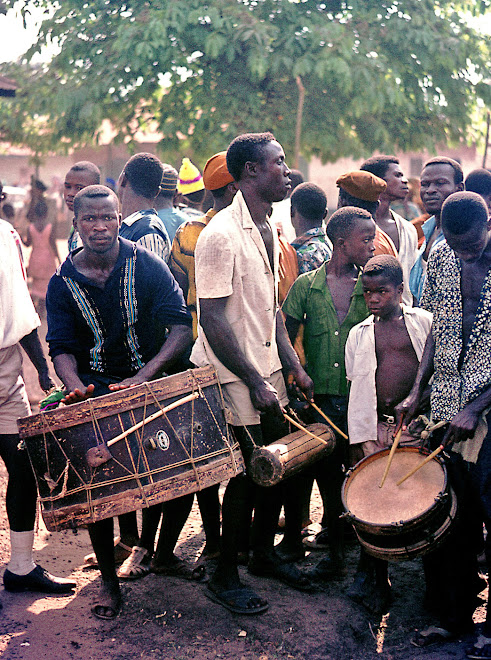

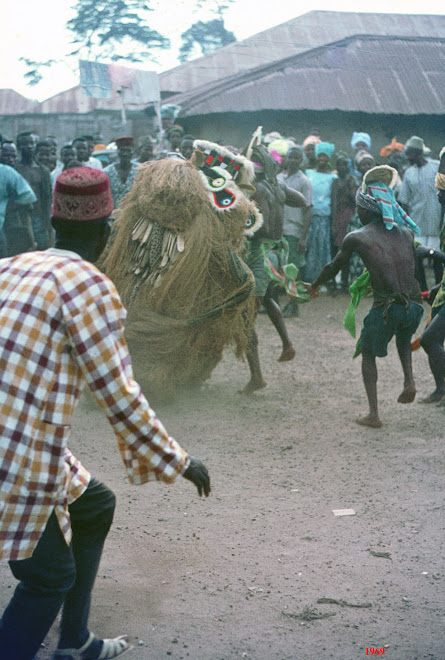
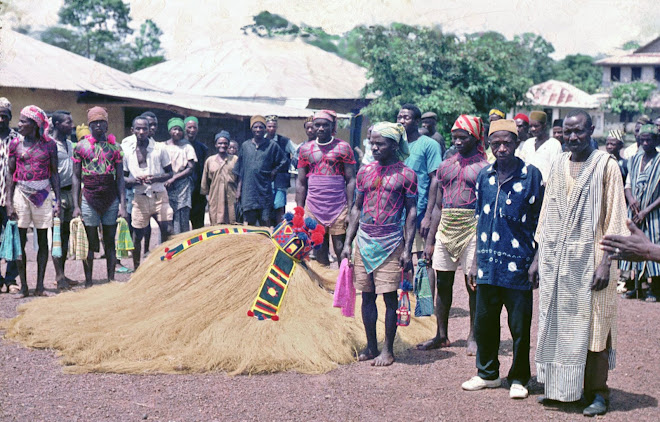


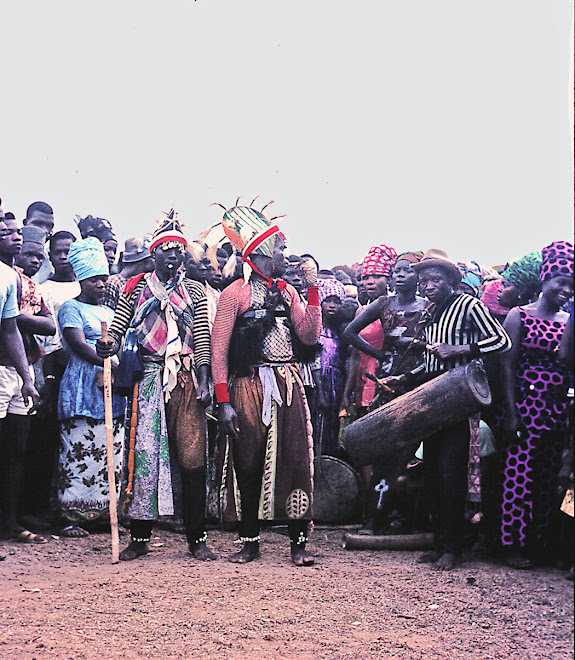

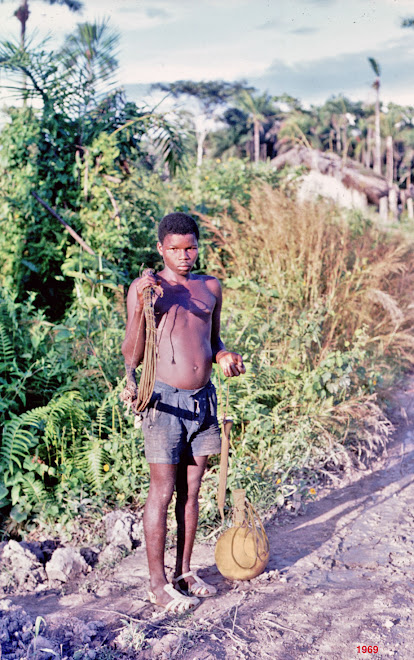
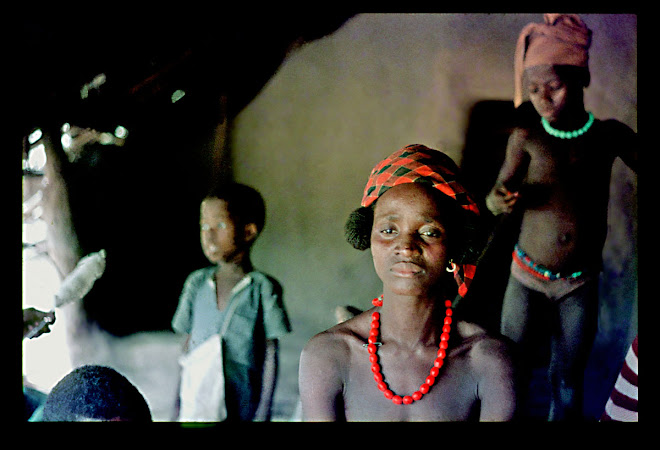
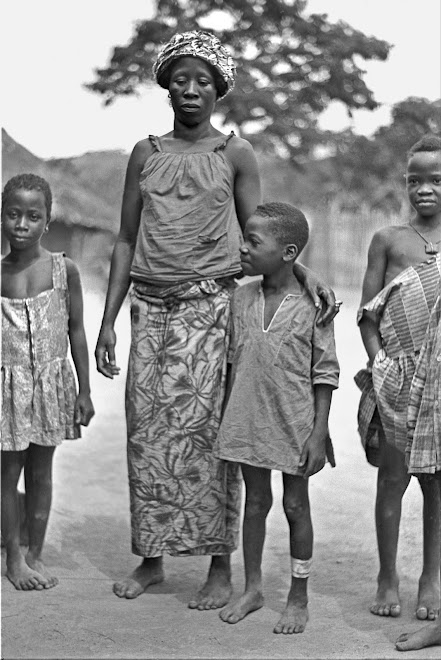


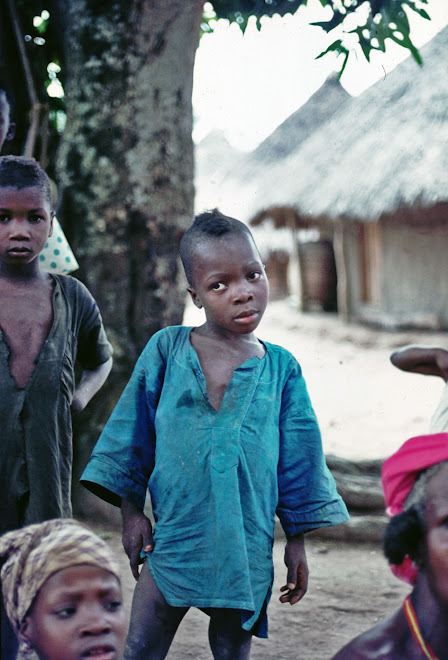

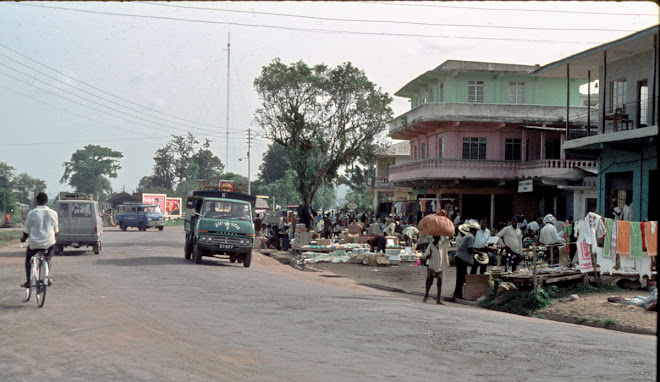
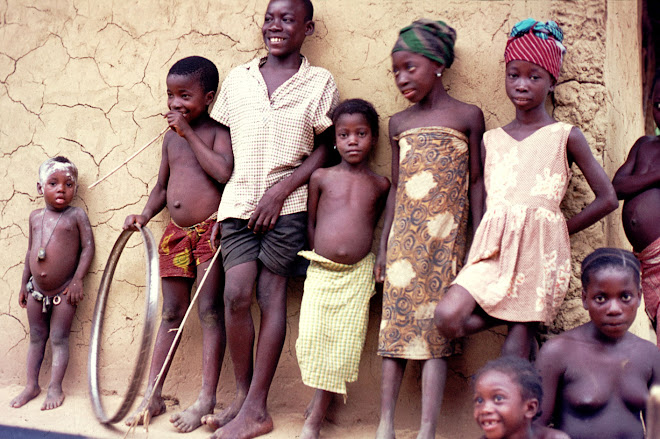
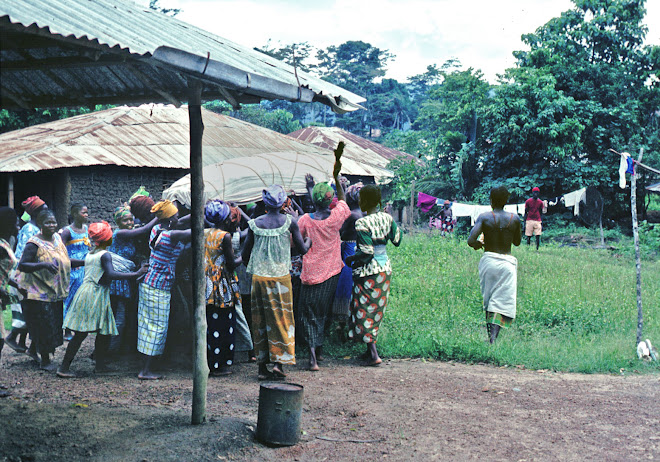

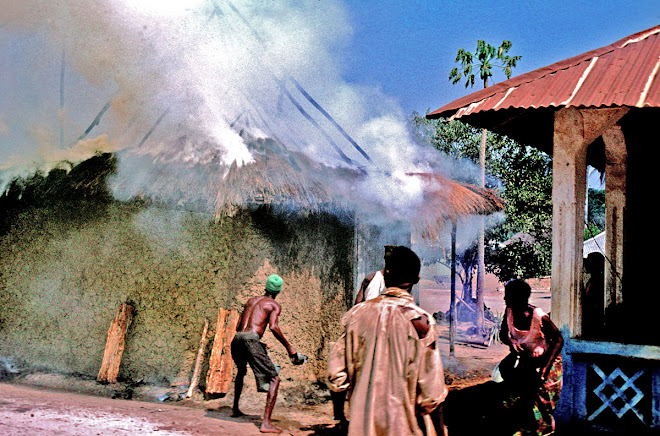






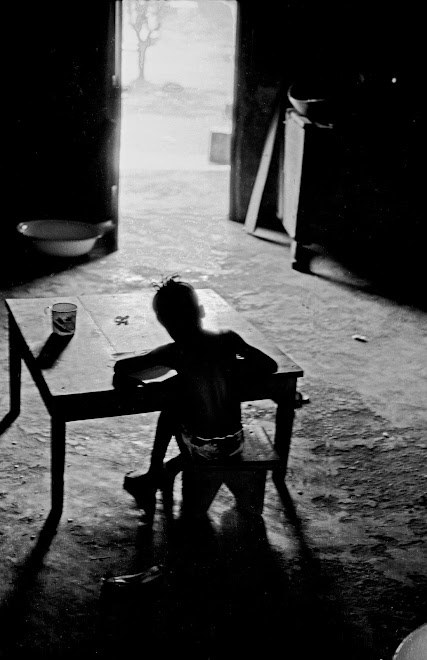


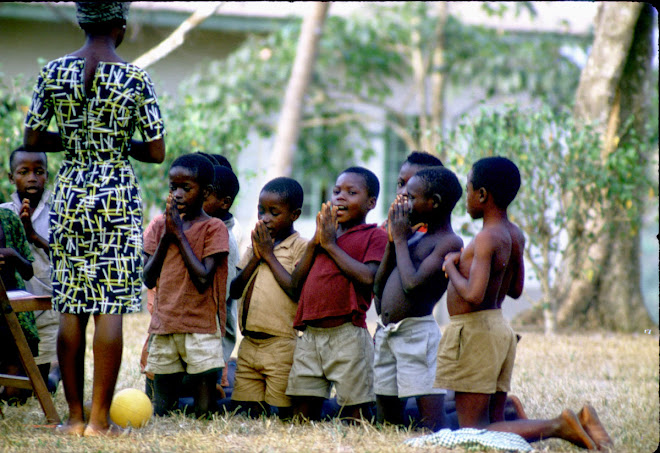
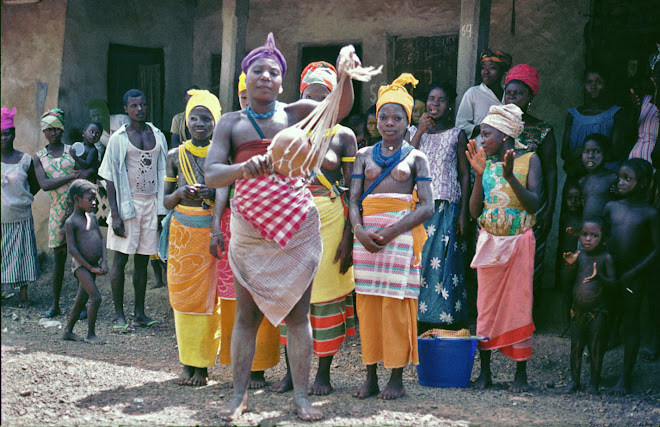

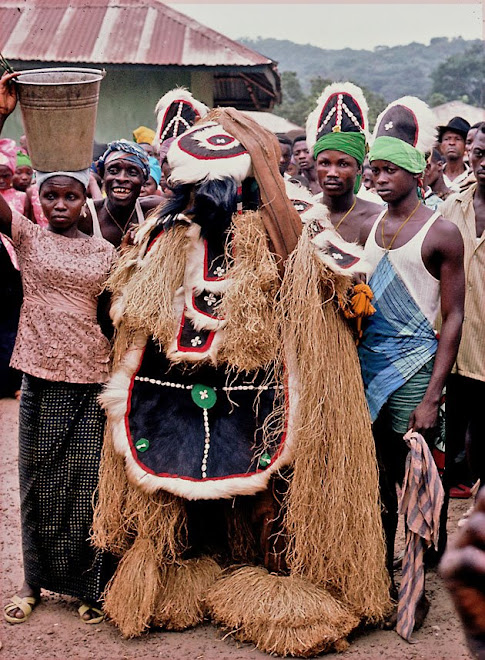


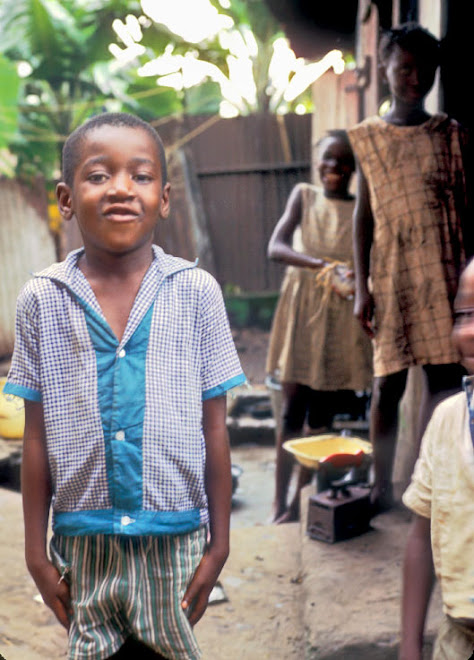
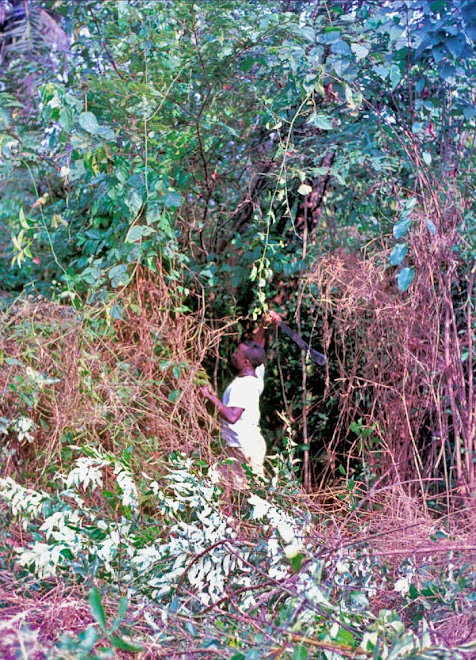

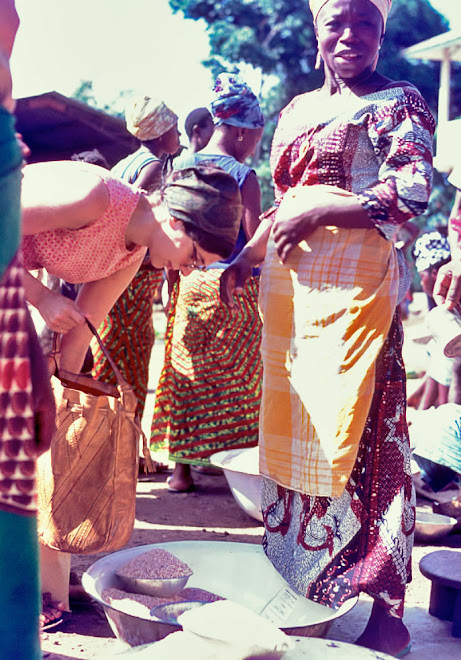



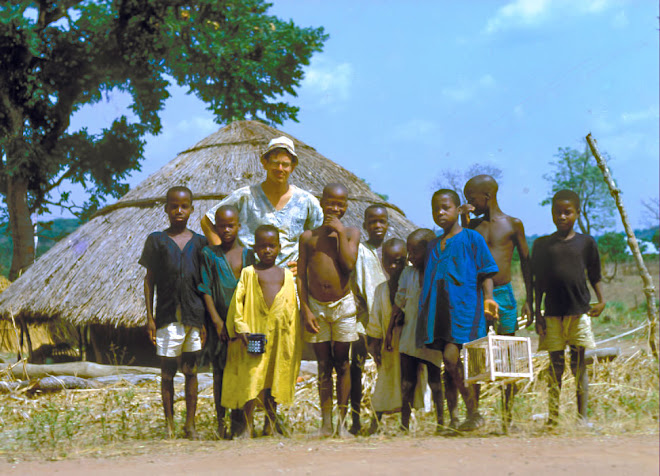
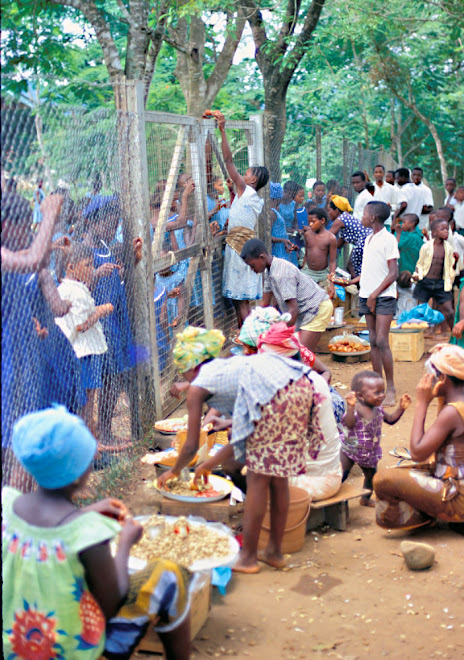


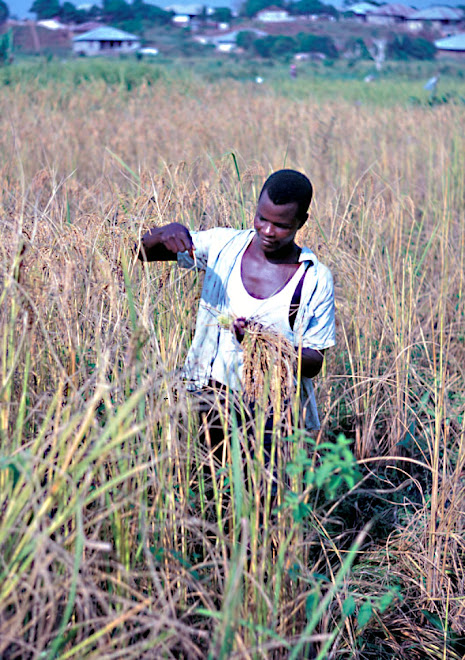


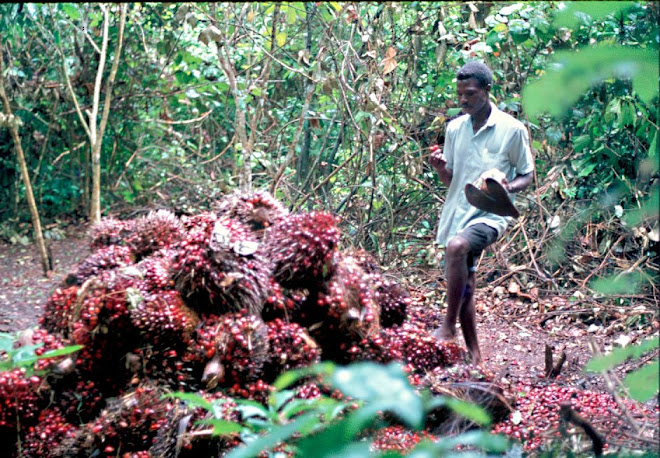

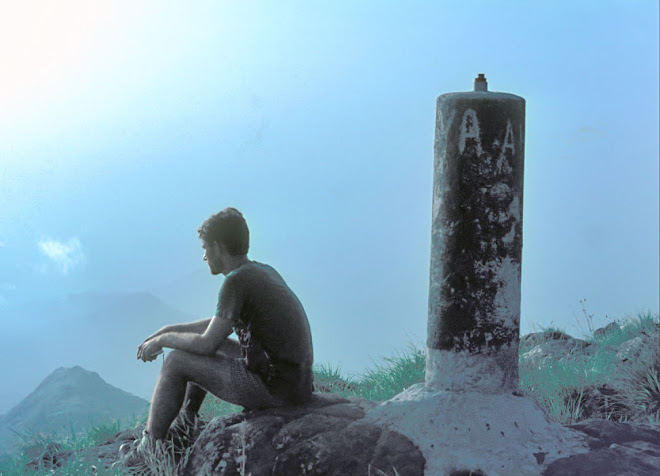





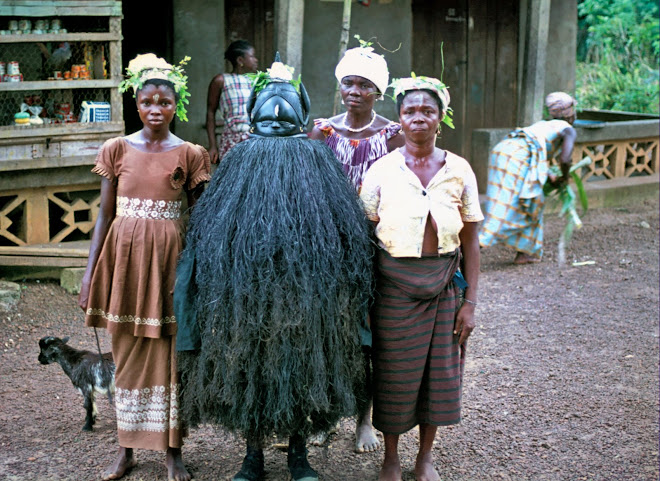





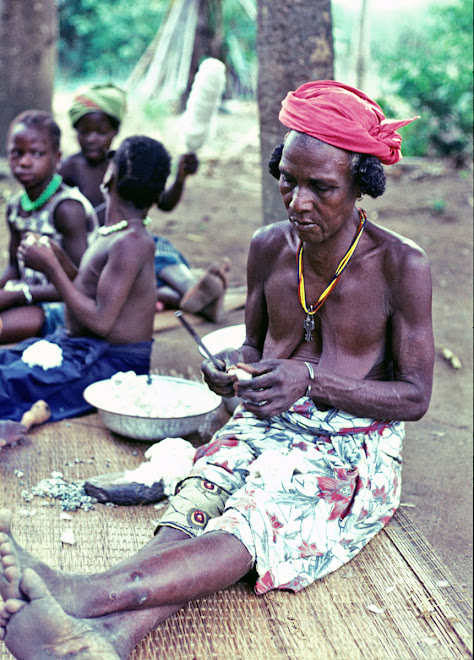

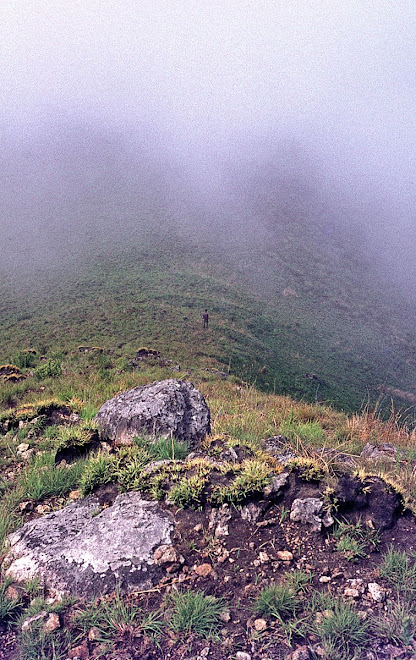

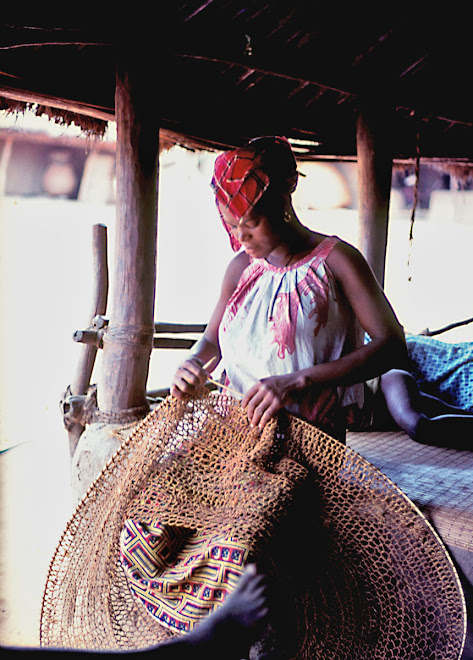
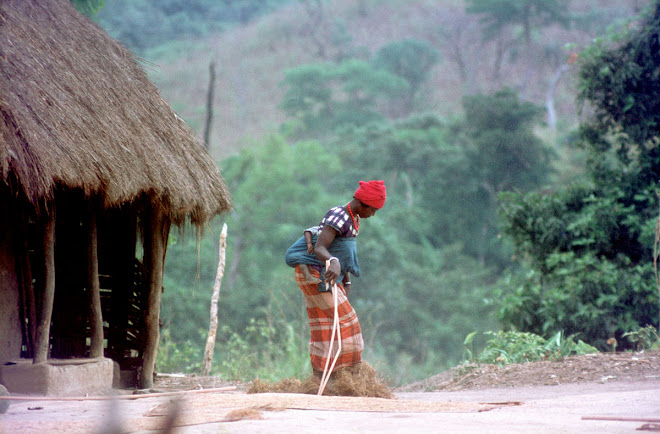
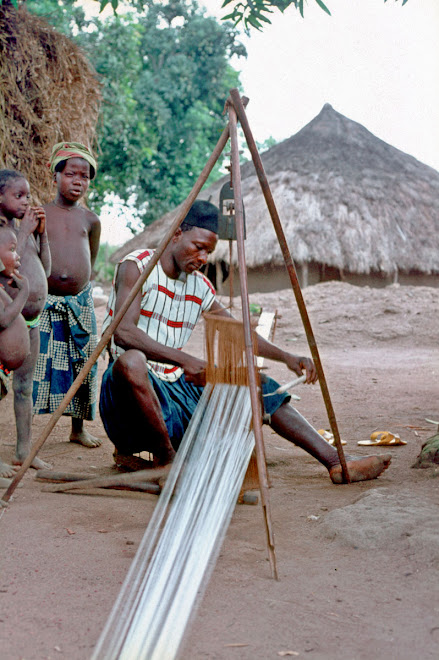
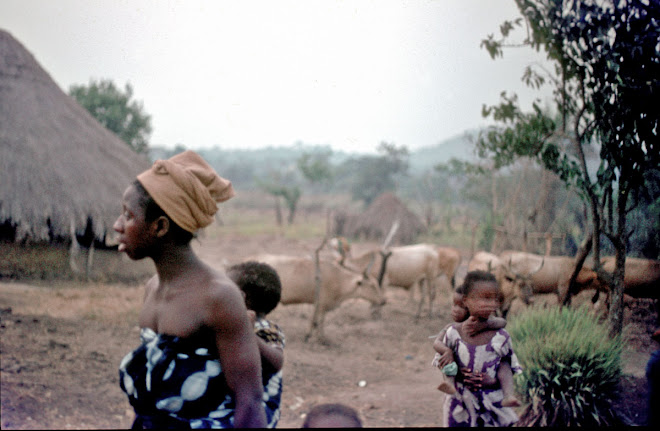



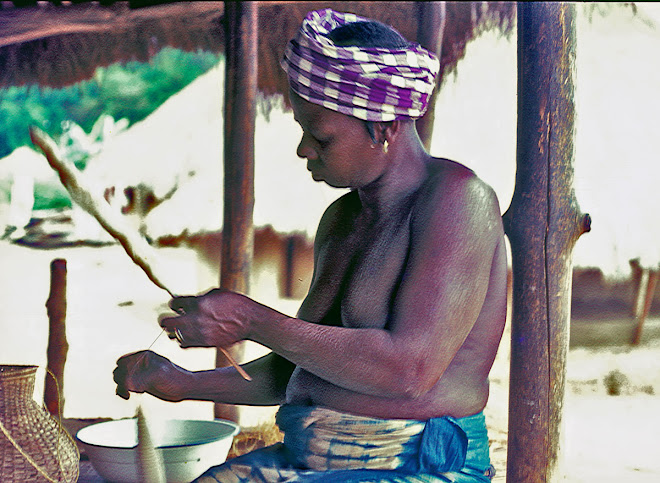

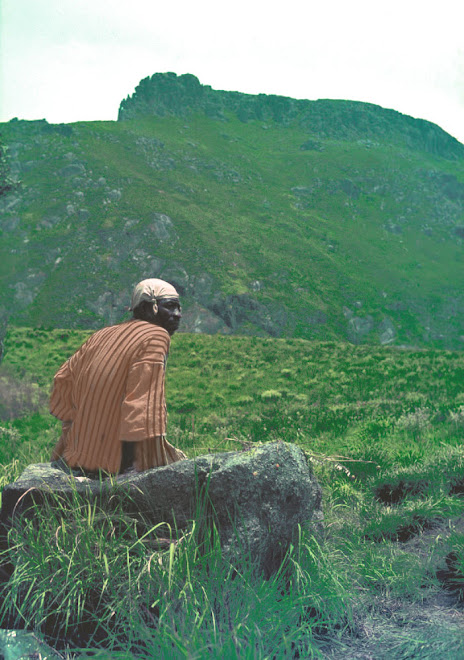
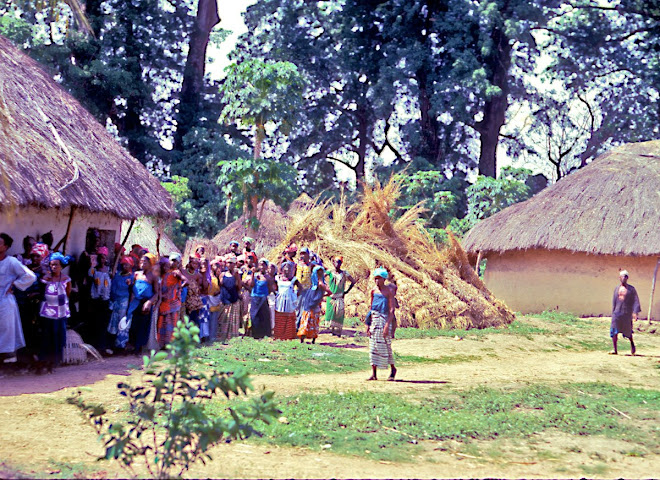


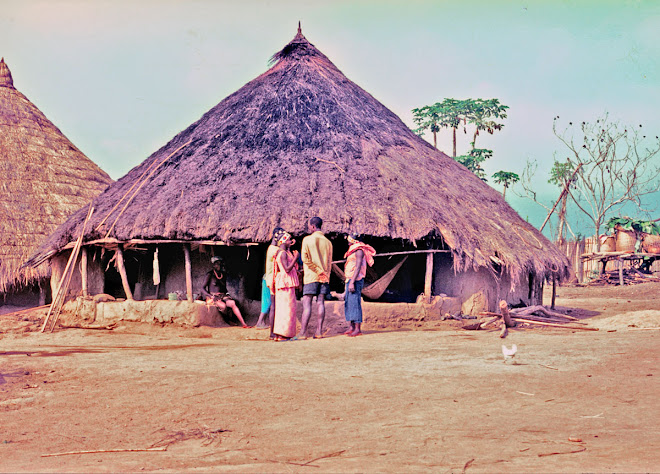
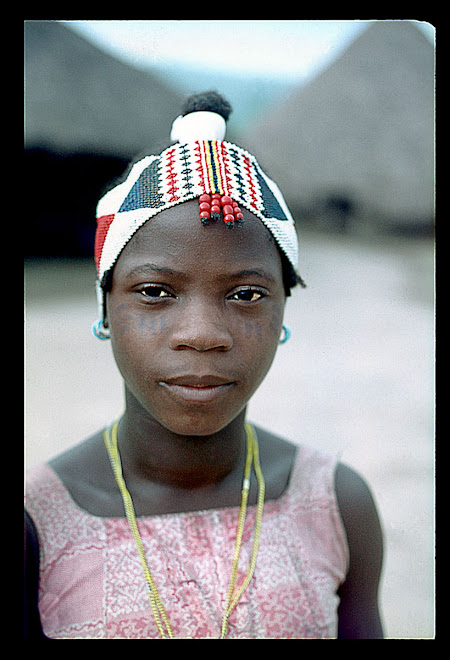

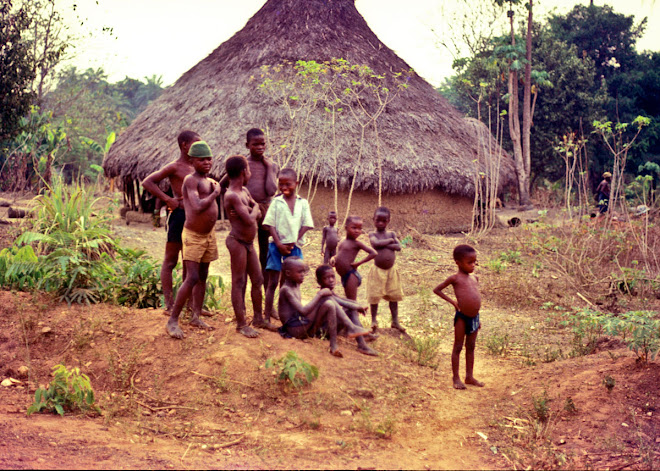





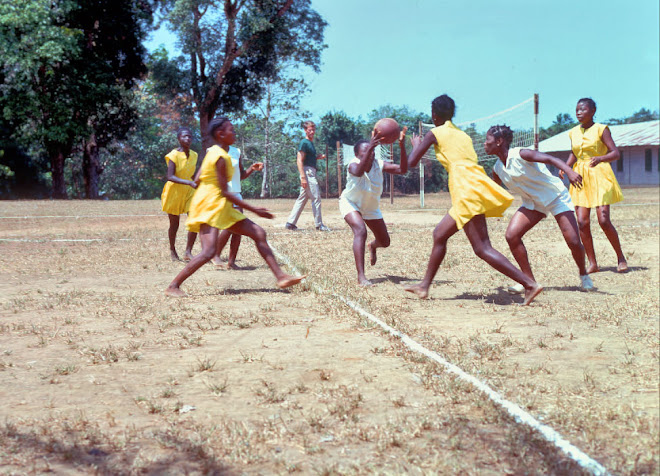





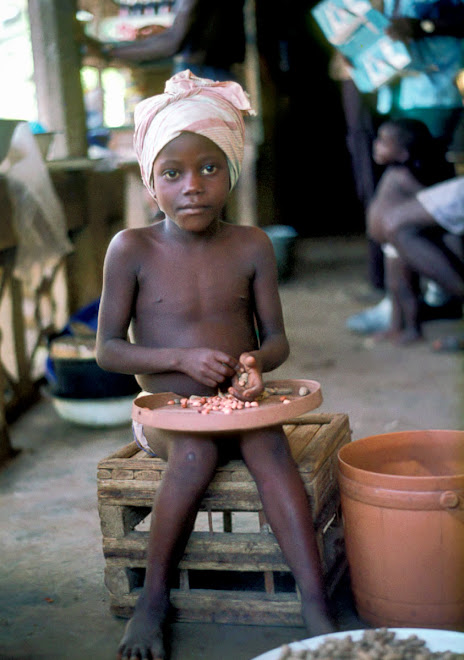
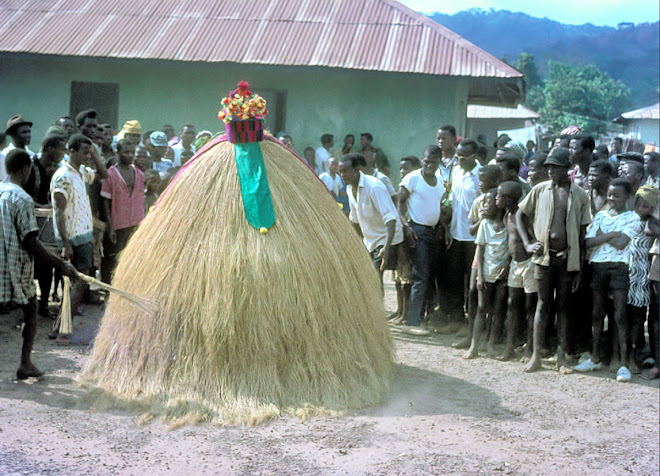
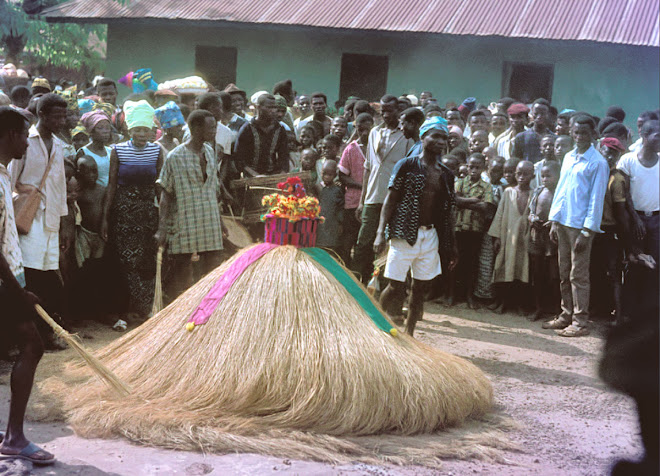
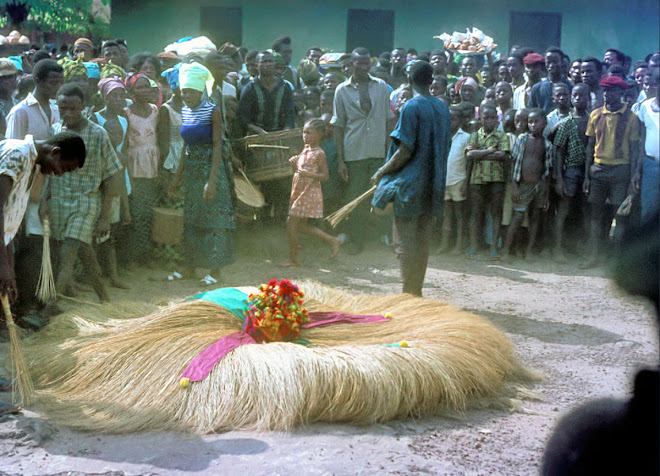



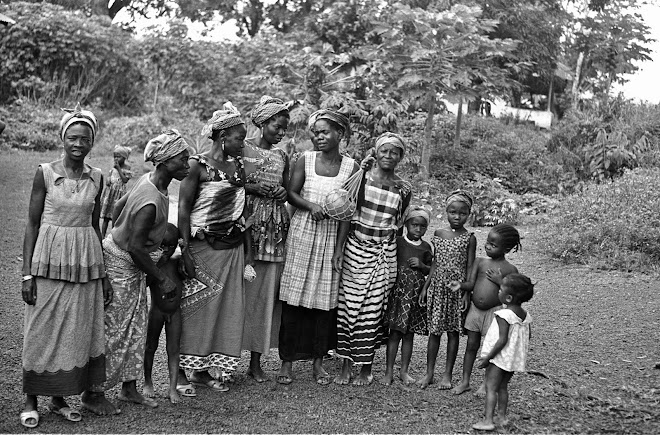


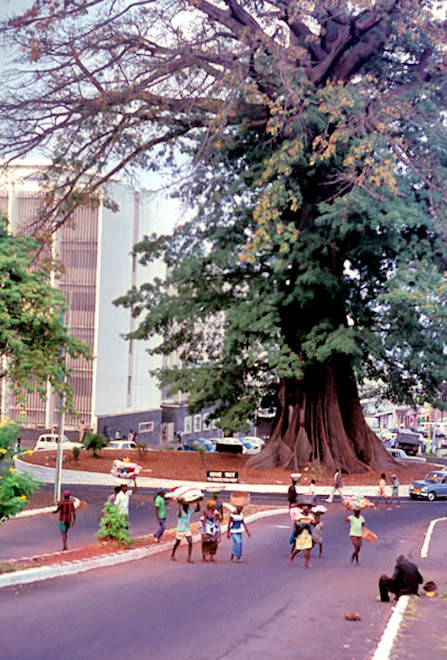

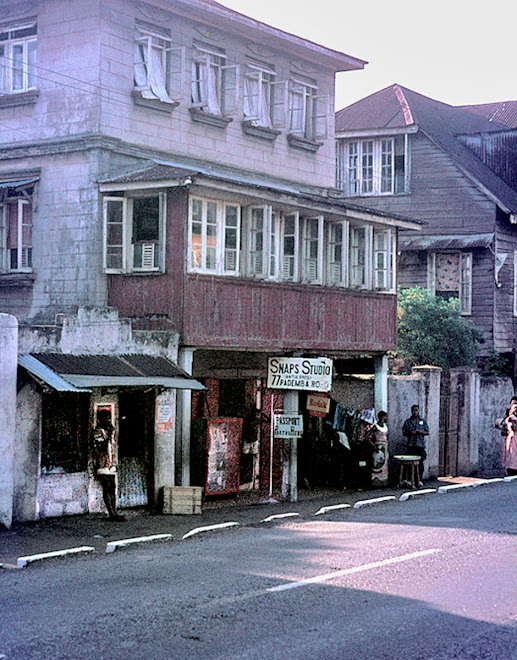


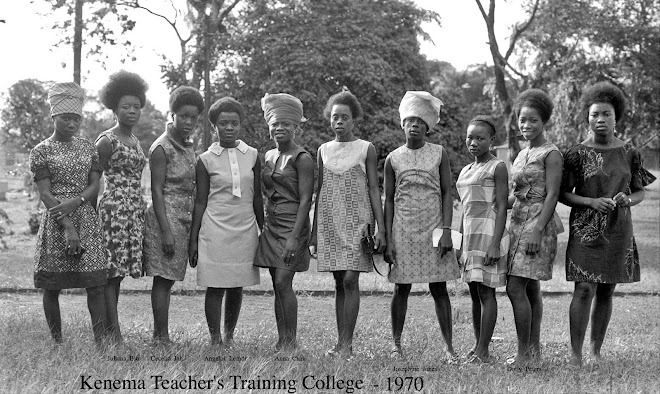
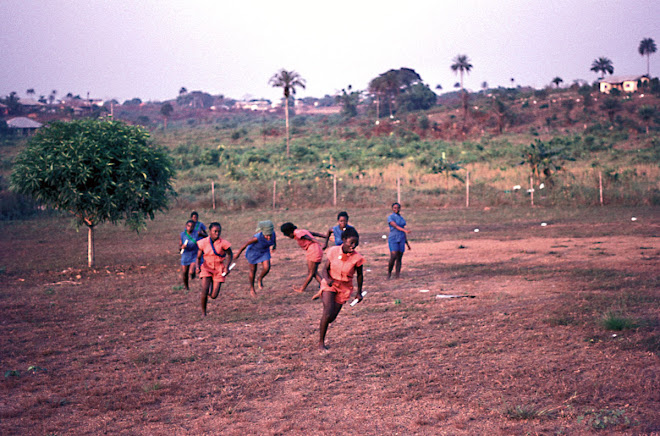
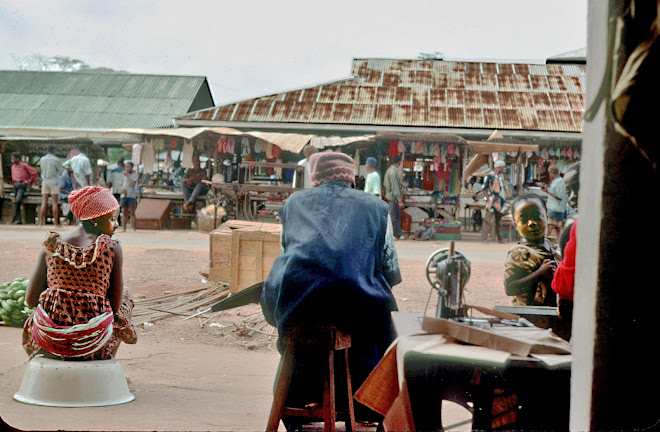
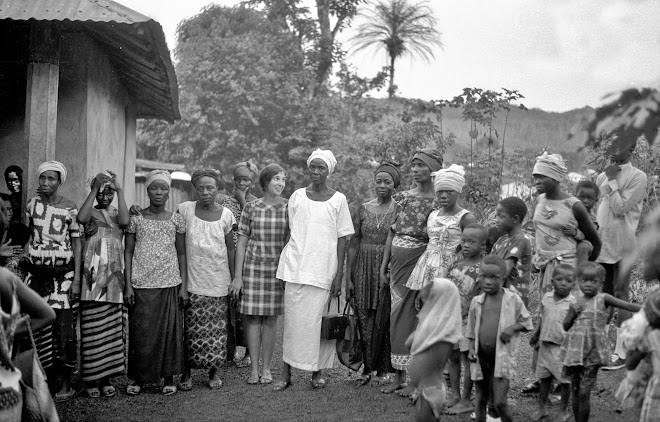

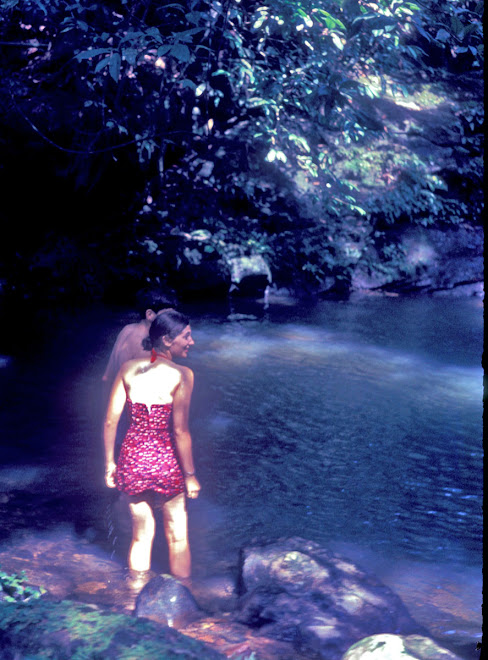
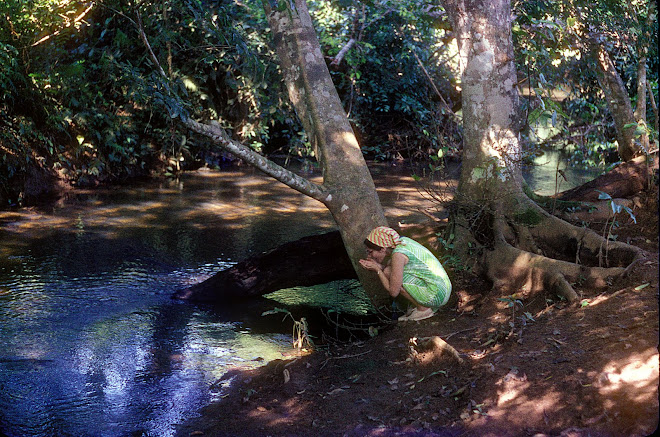
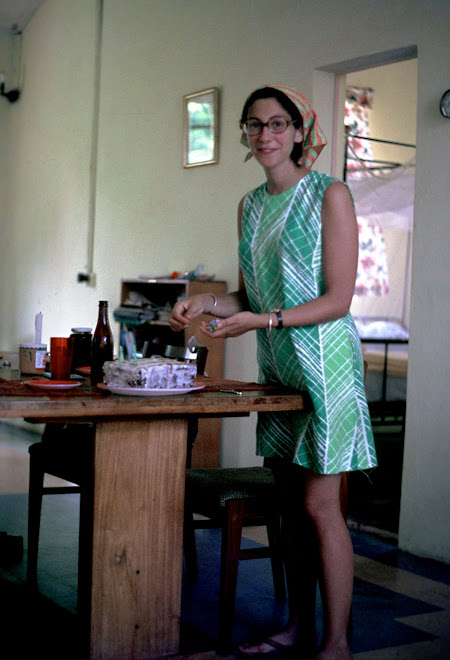

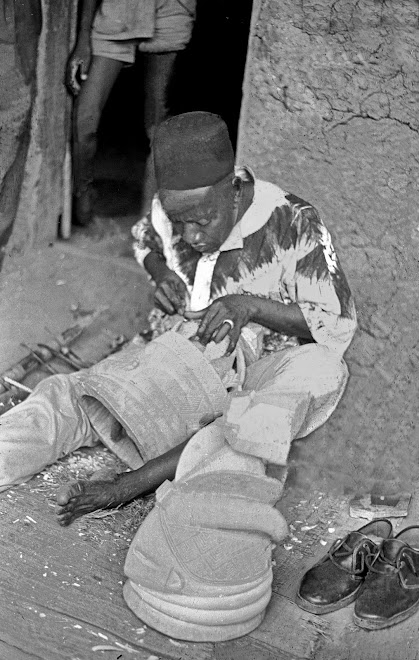

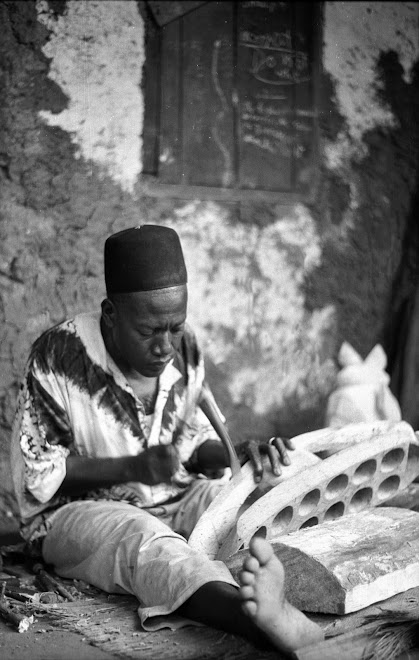




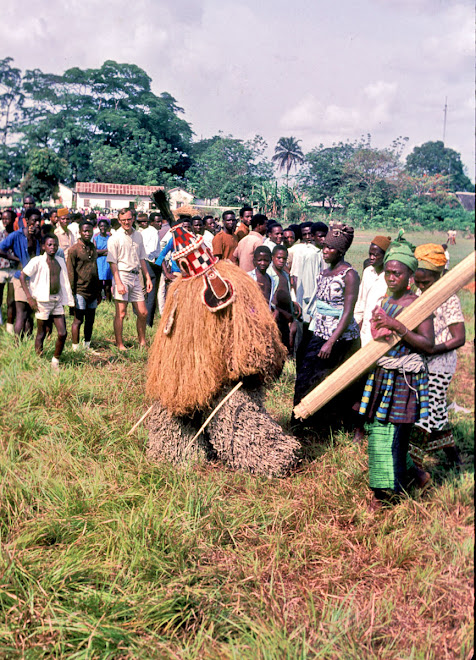
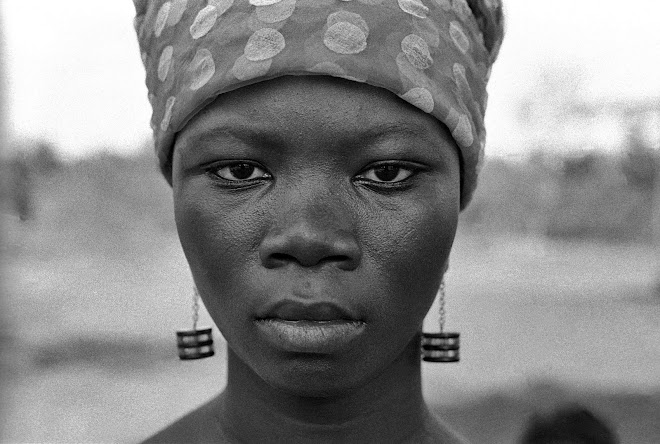
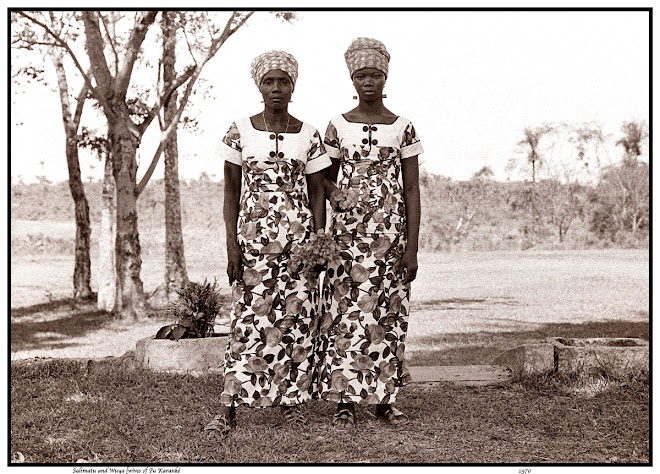

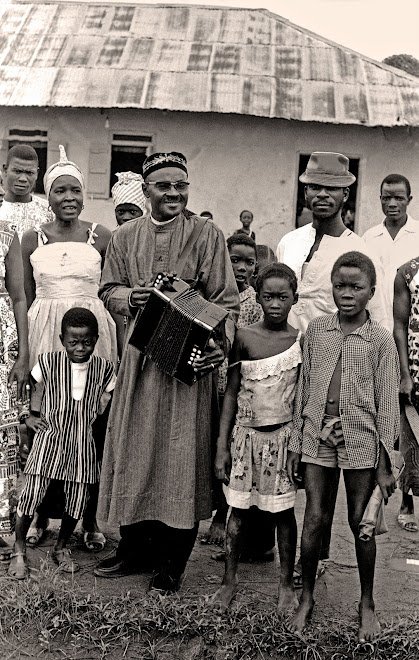
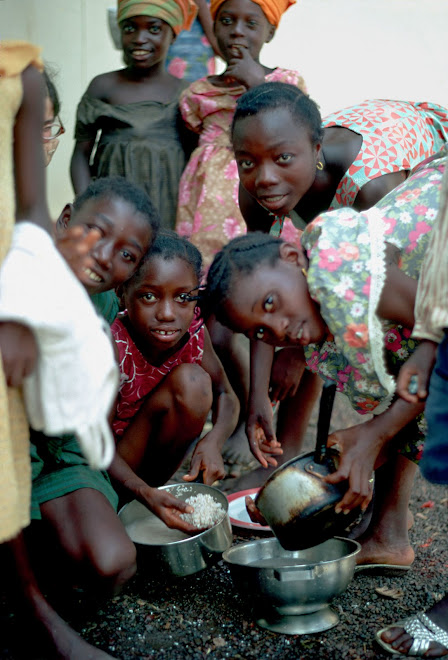


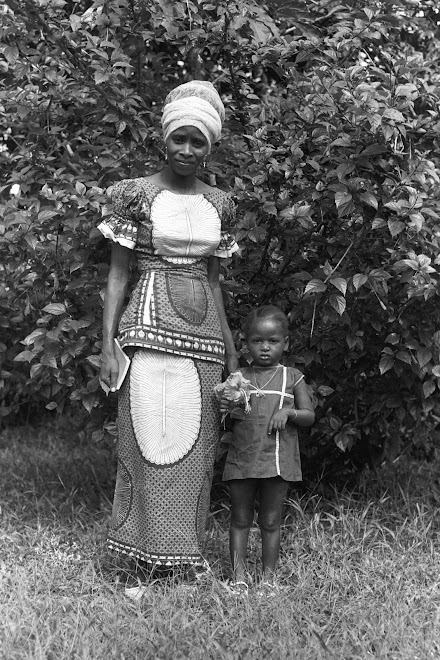




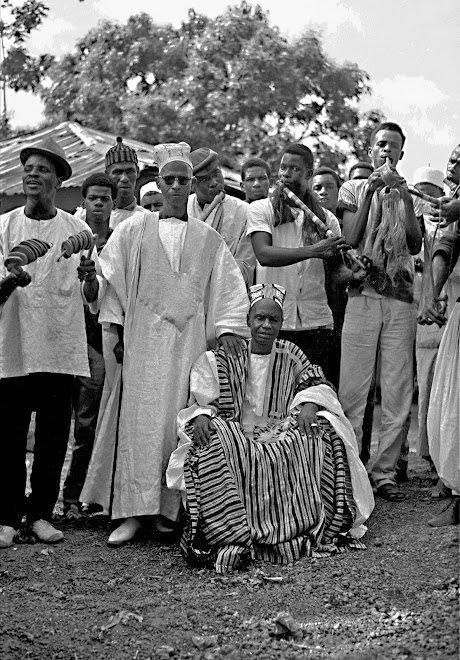




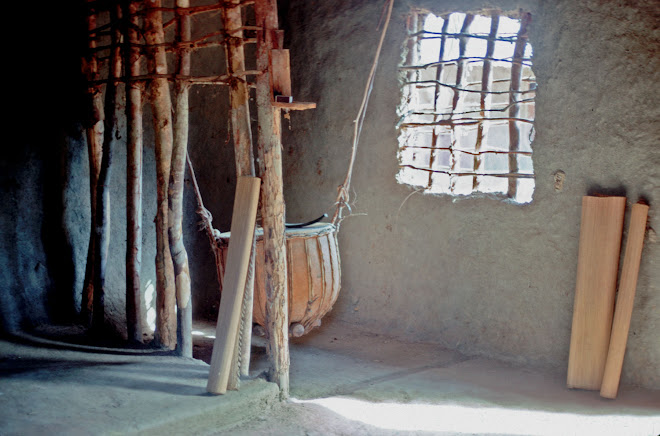
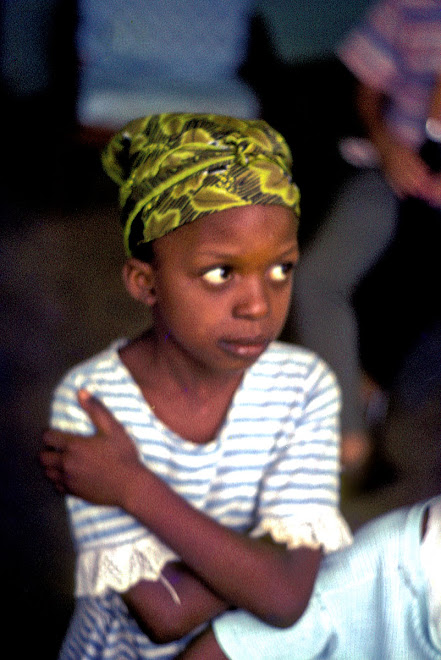
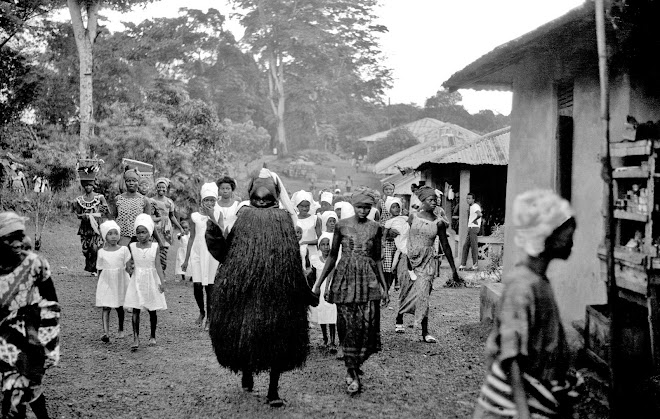
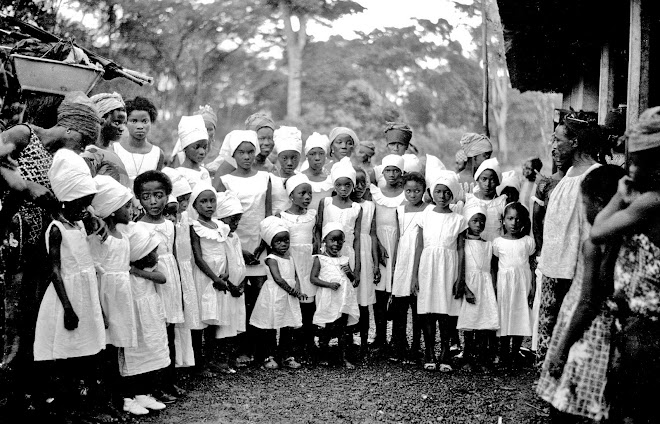


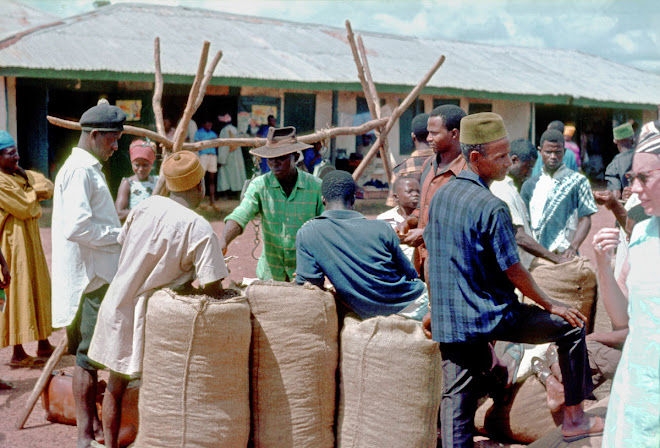

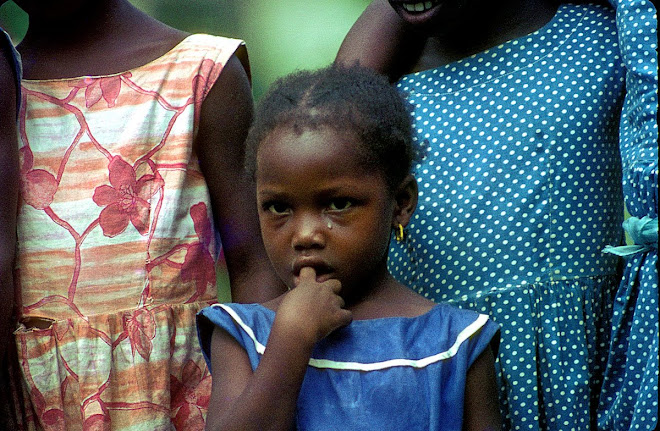
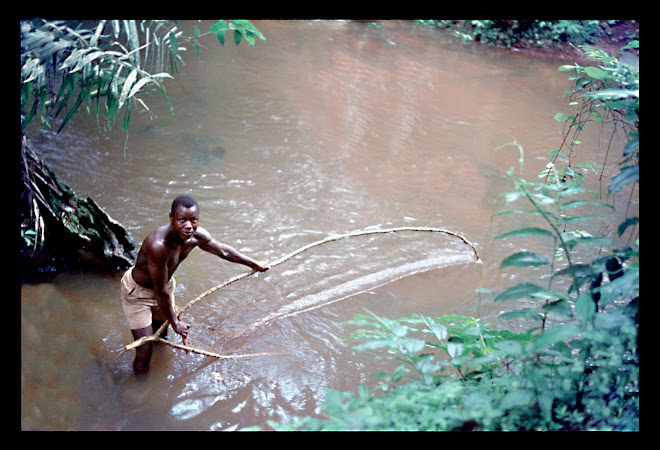
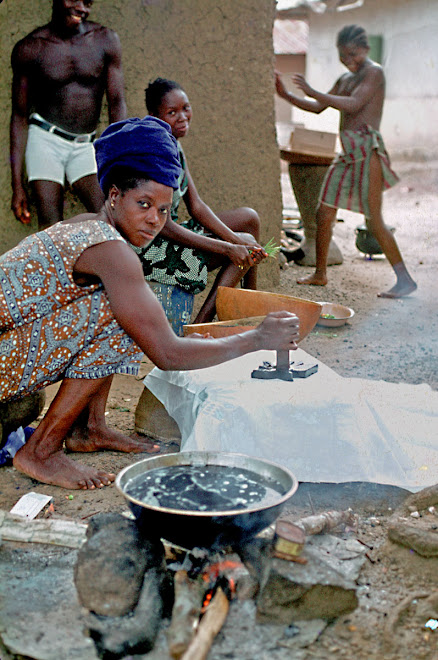
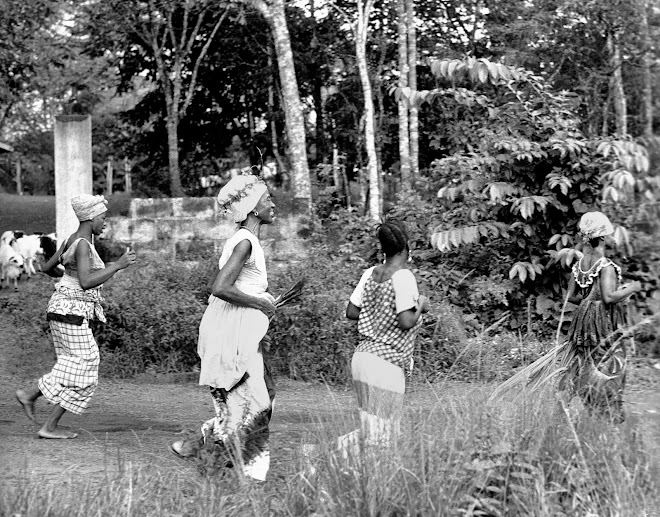


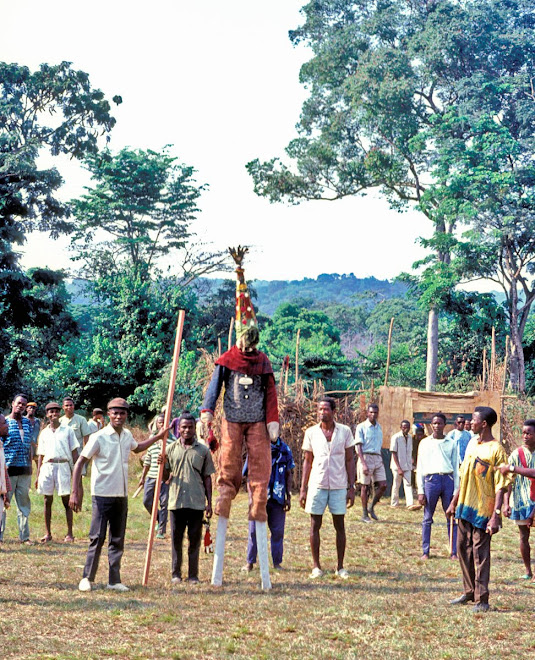
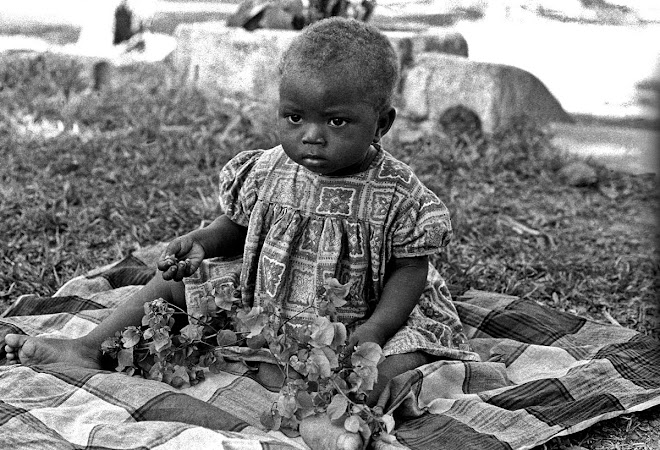


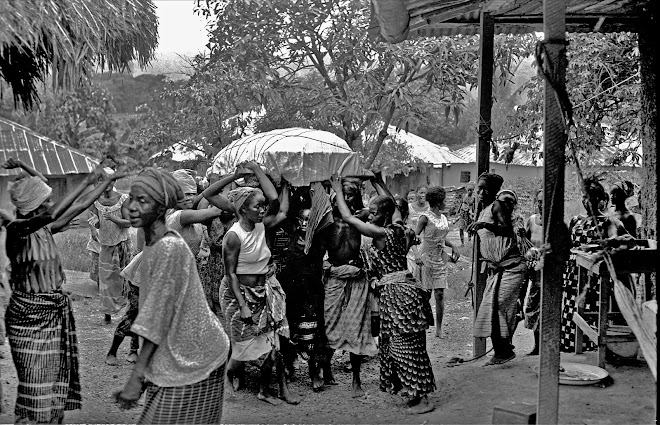


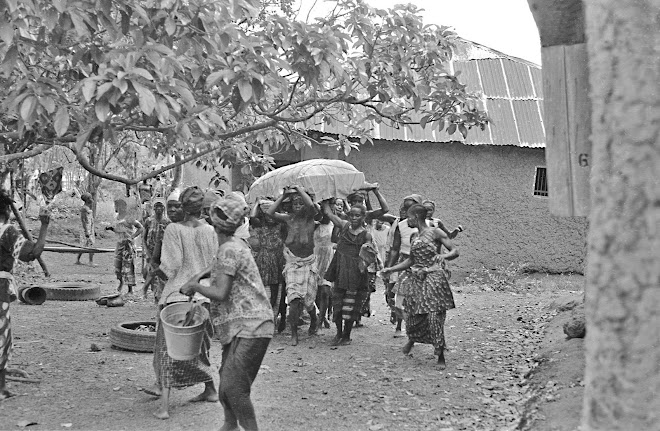
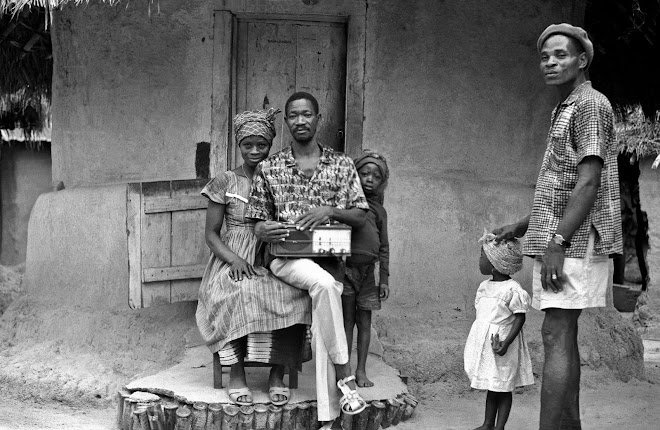
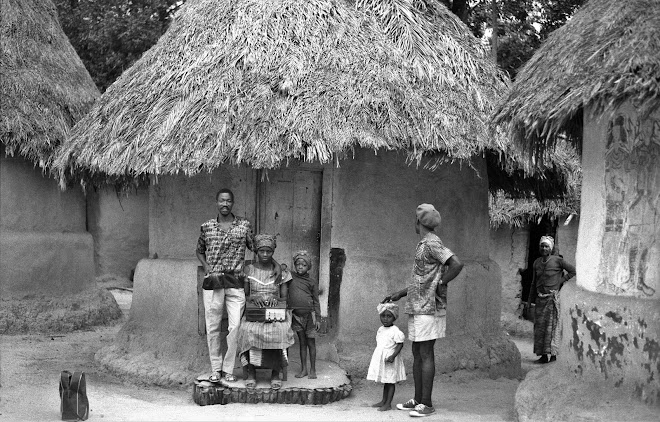


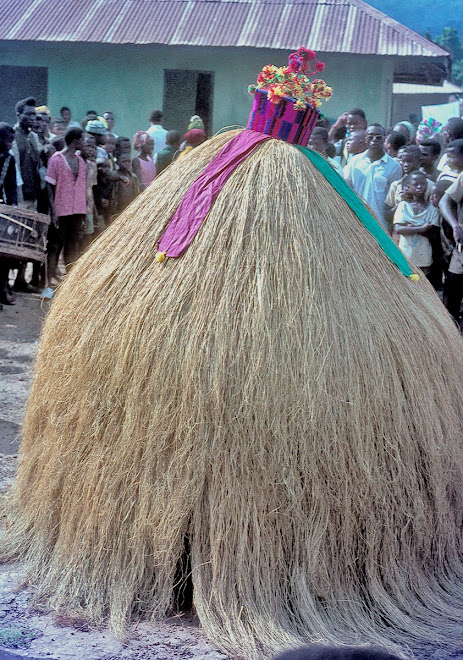
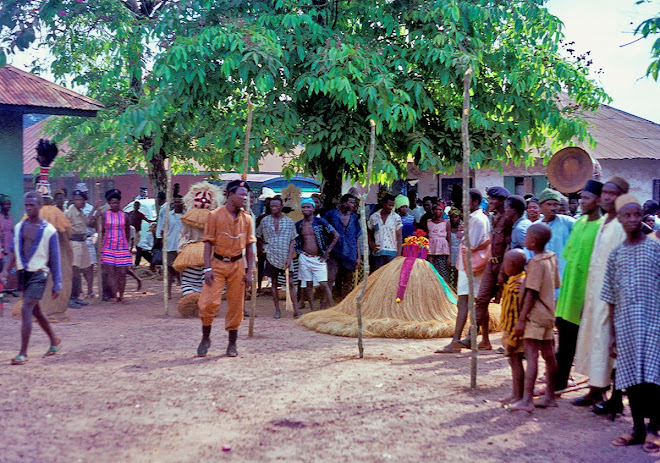
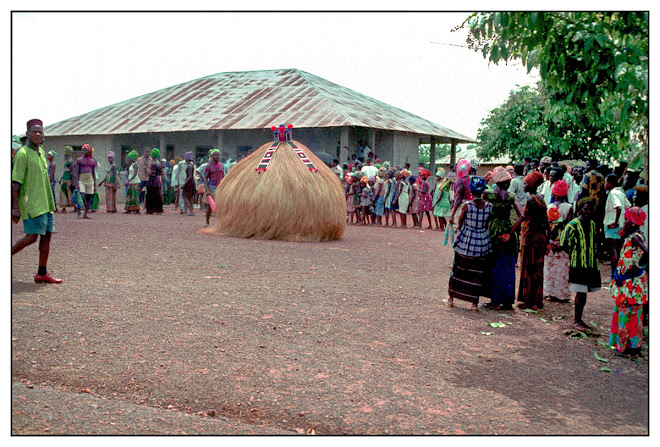
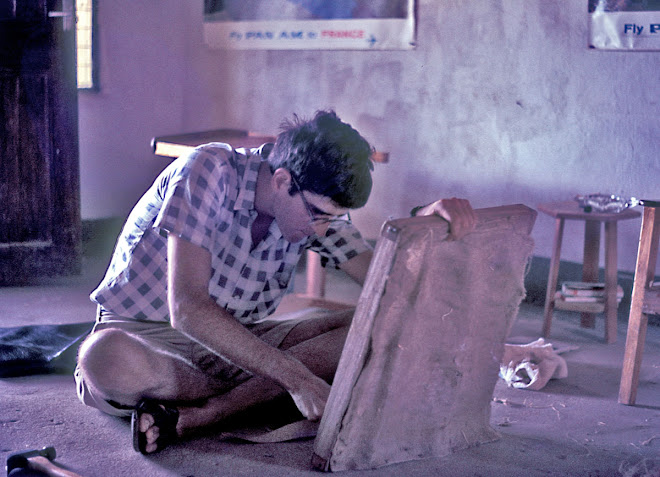

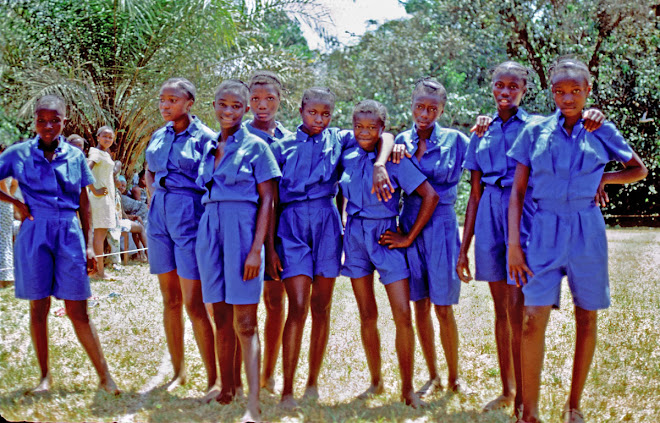
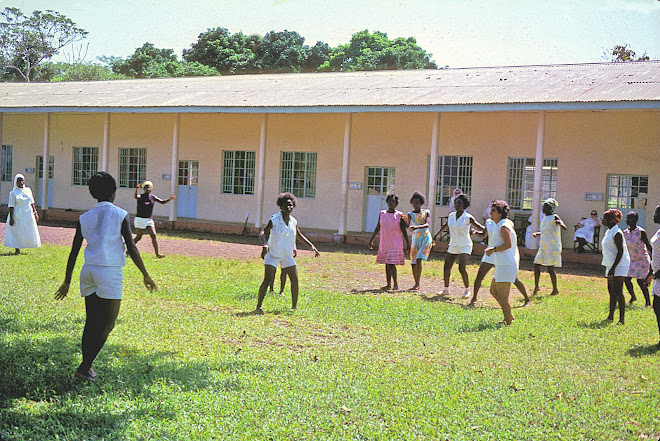

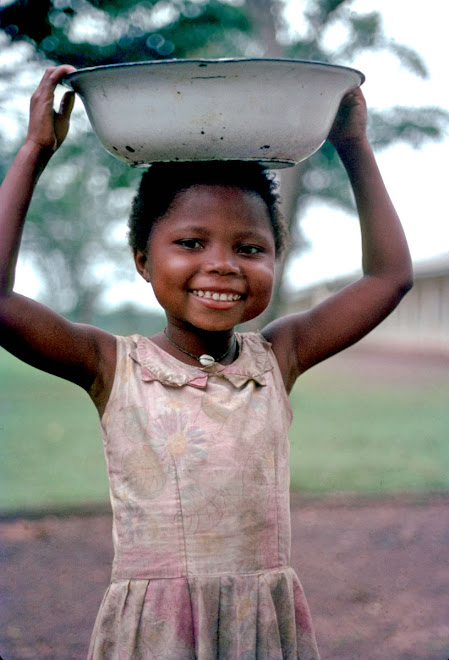

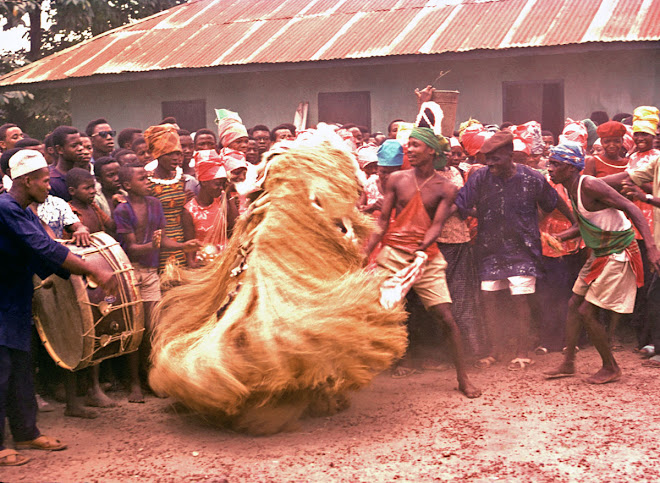
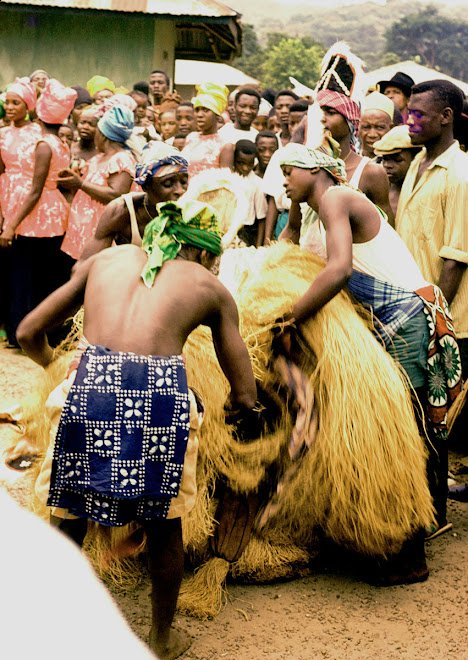
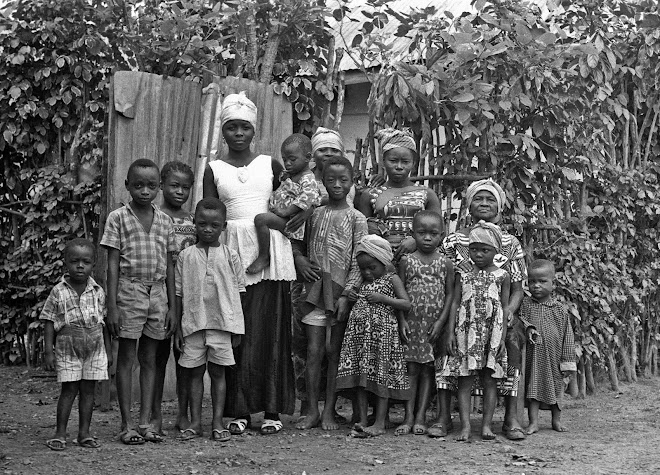.jpg)
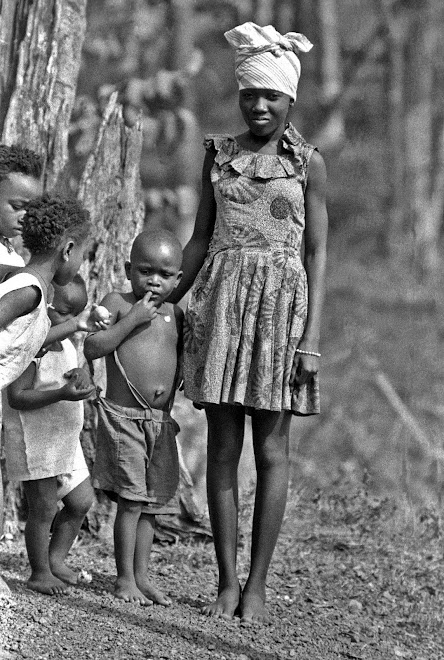

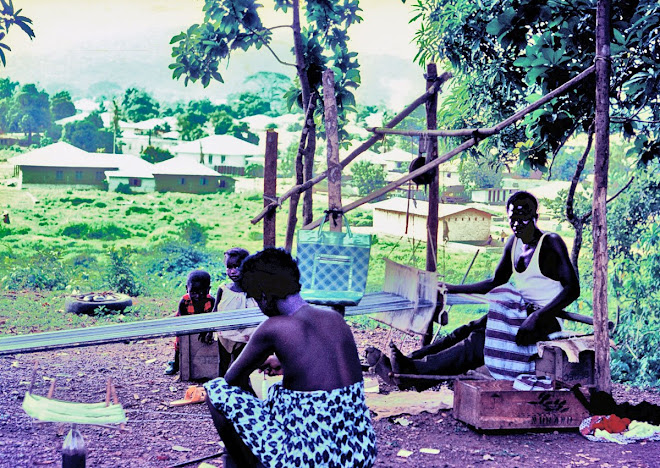








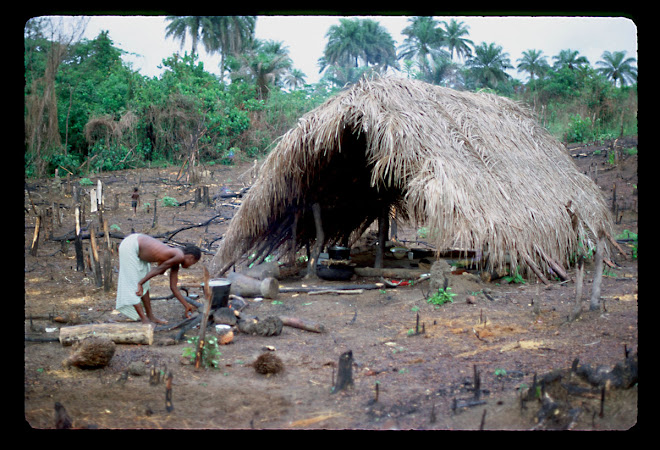
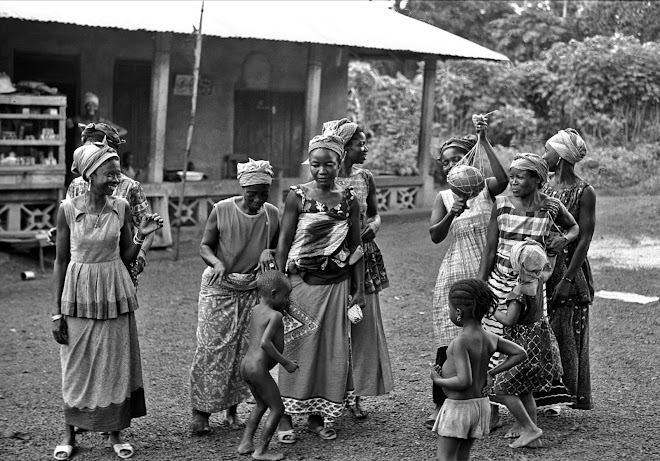


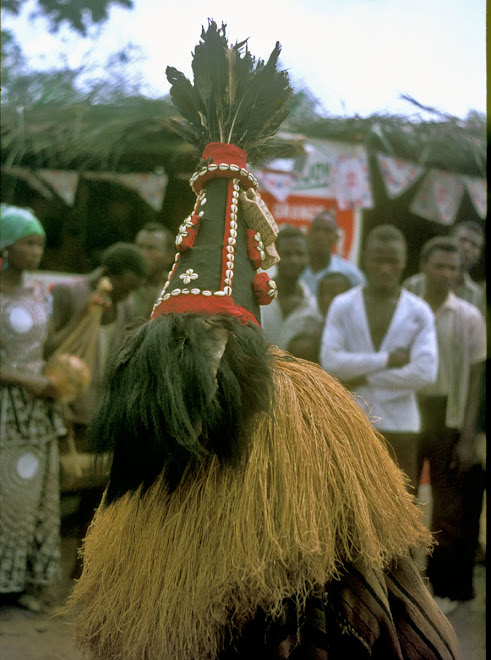
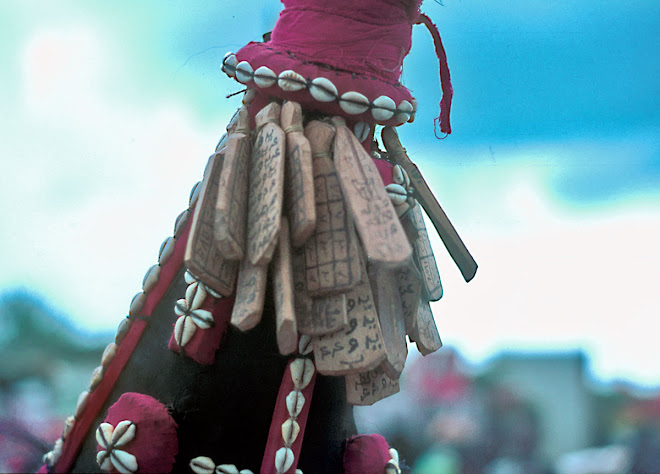
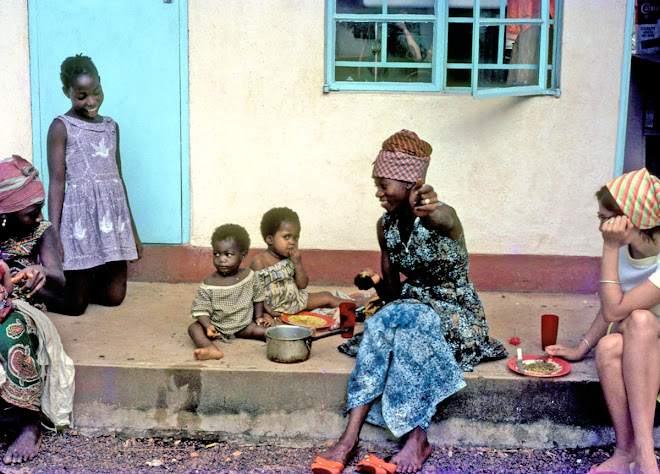

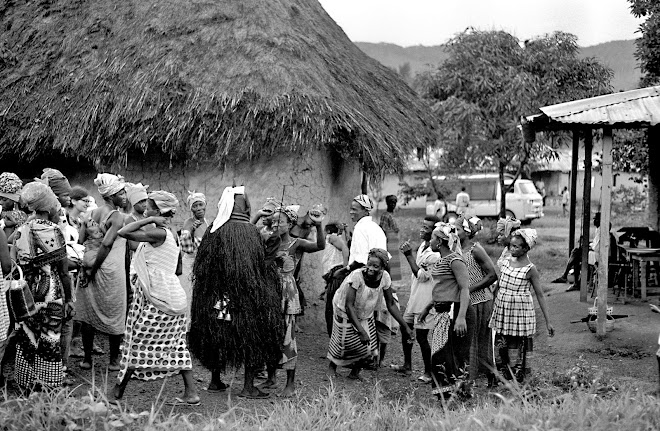
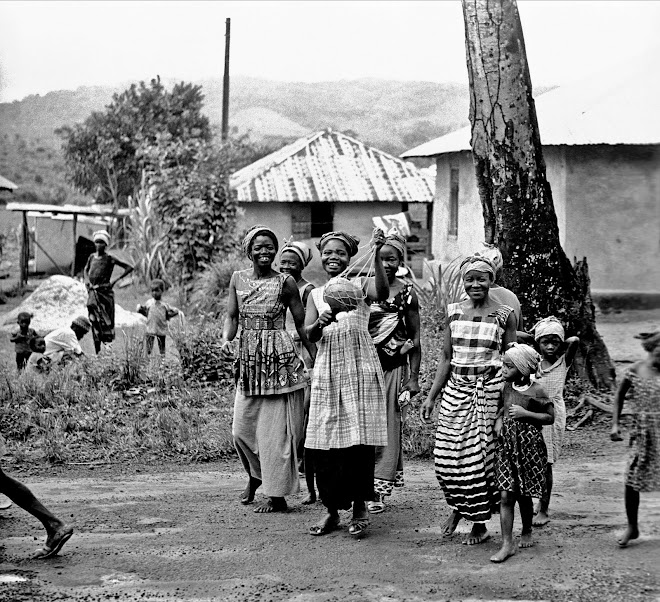
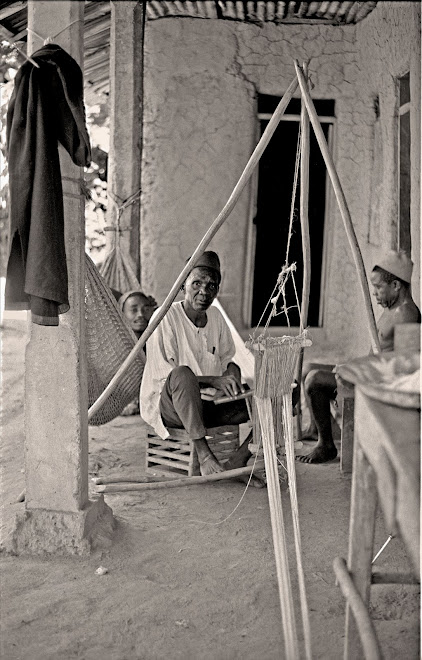
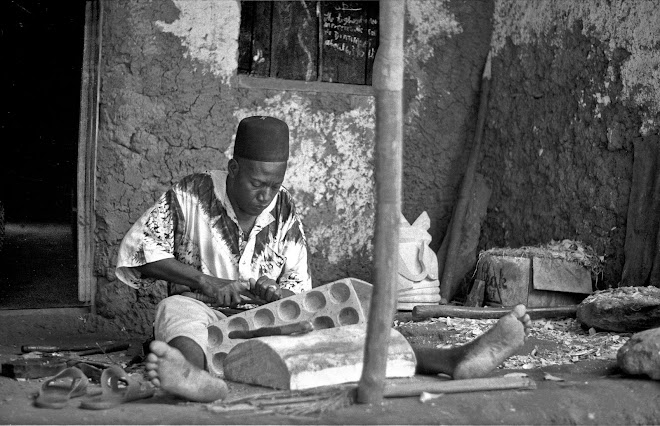

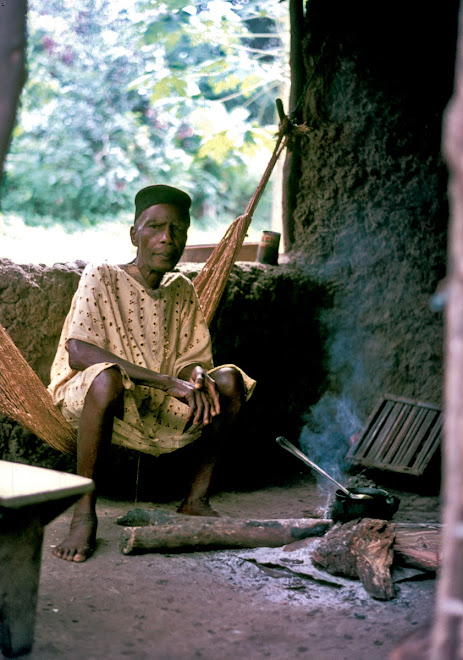

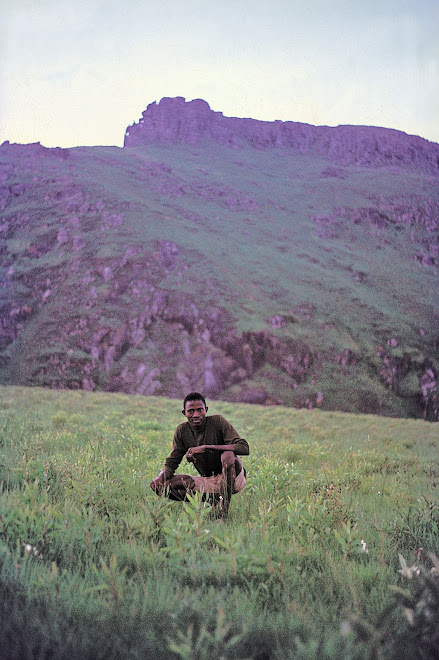

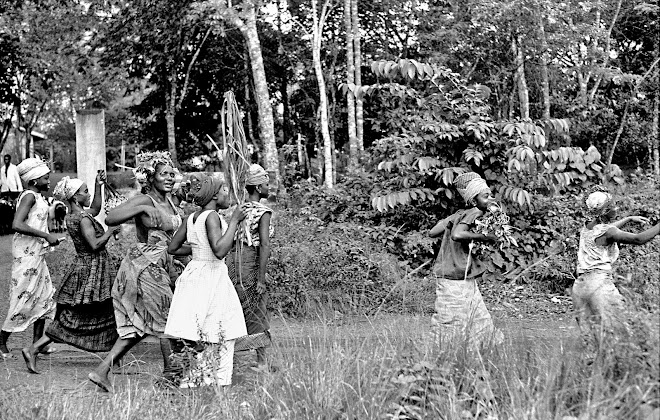
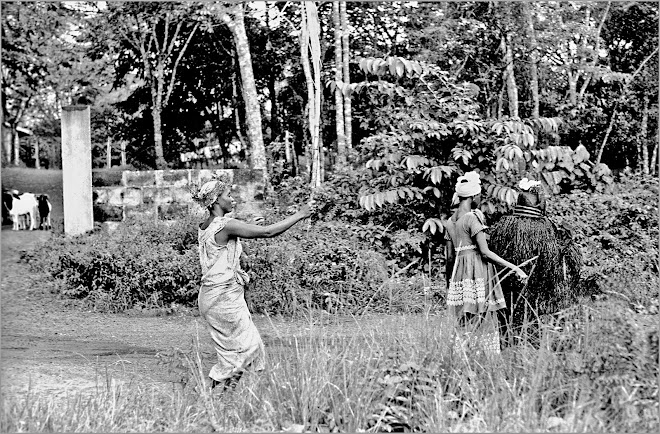

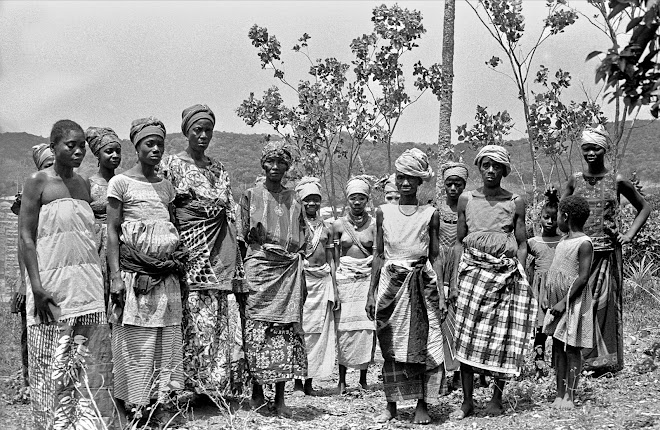
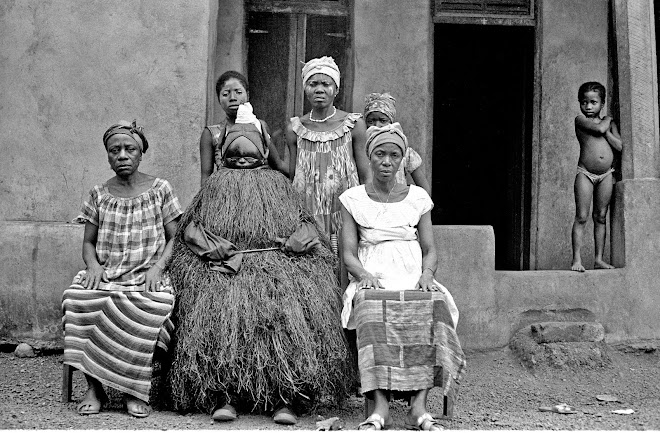
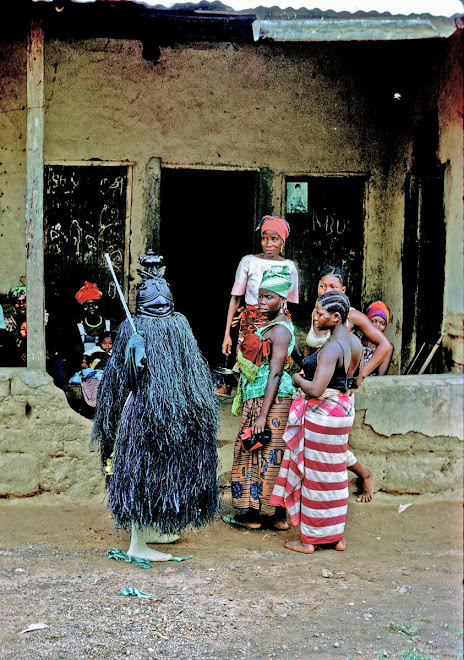
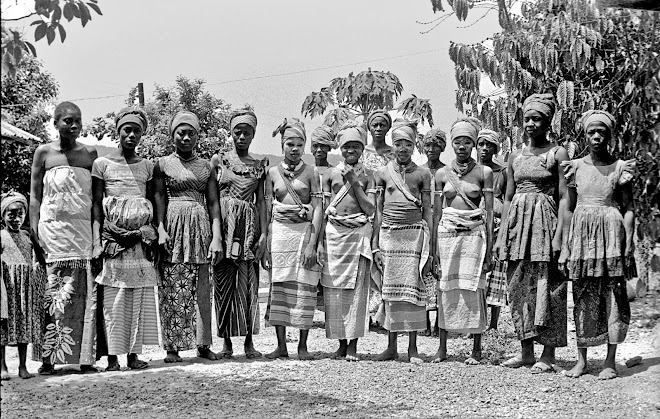
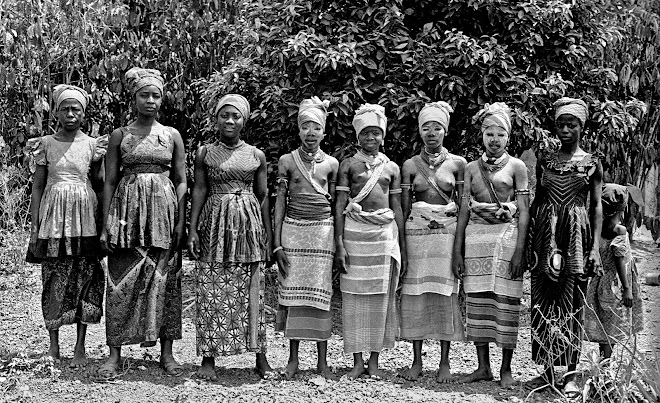
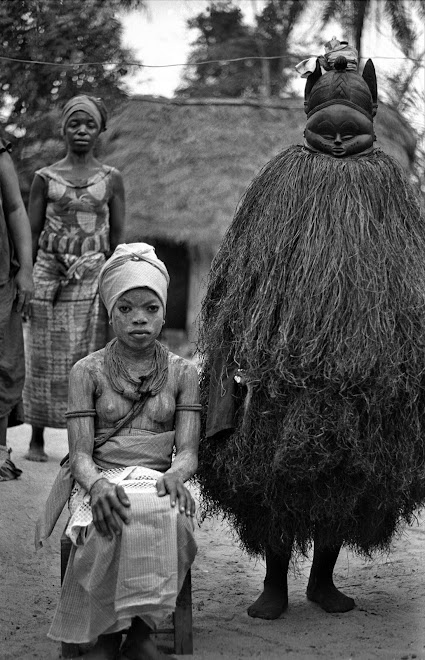
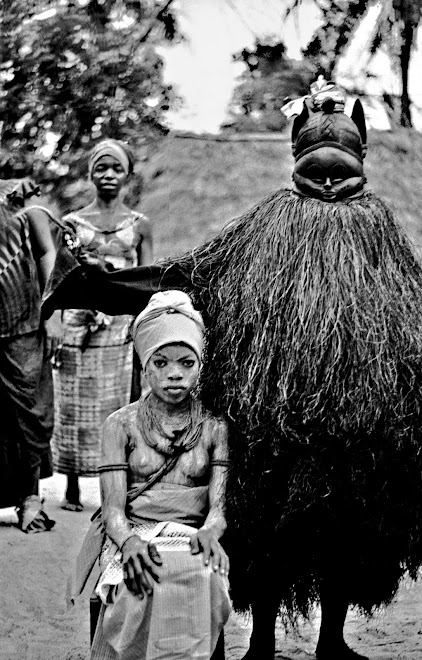-1969.jpg)
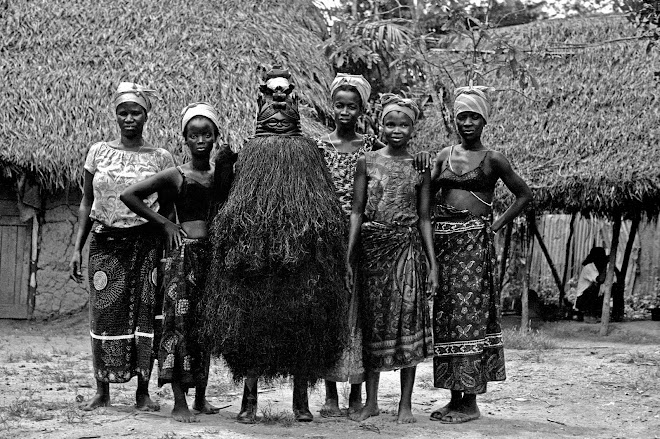

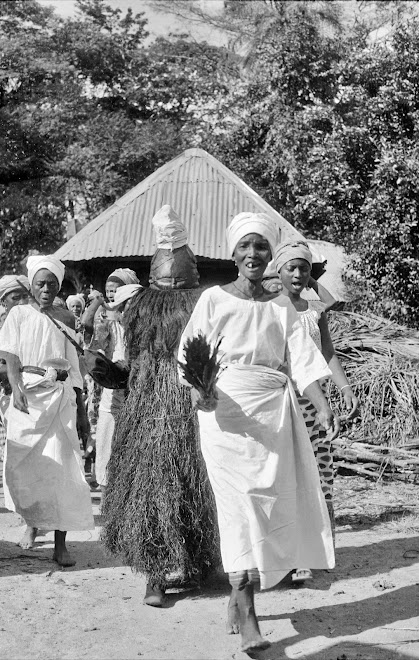
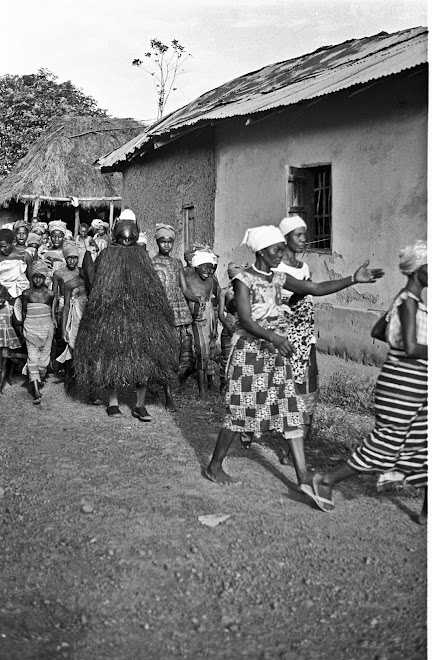
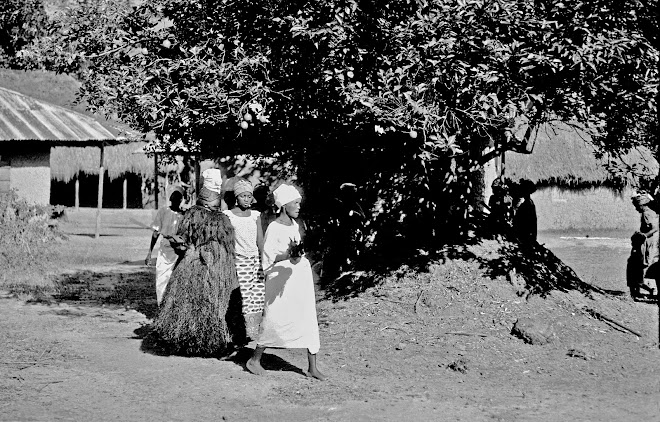

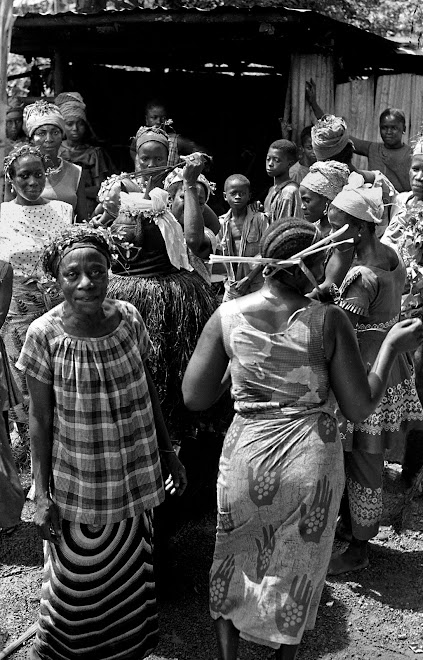
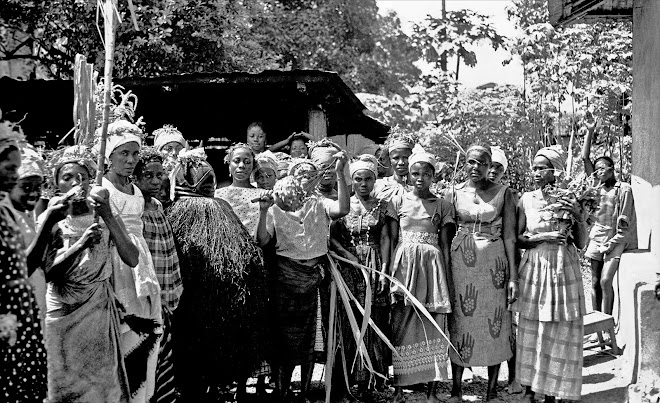
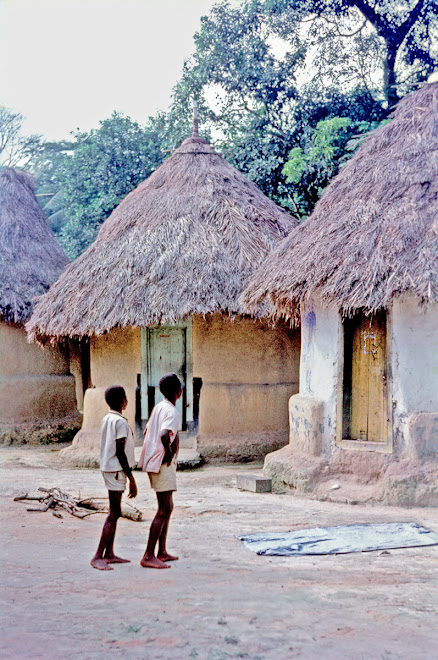

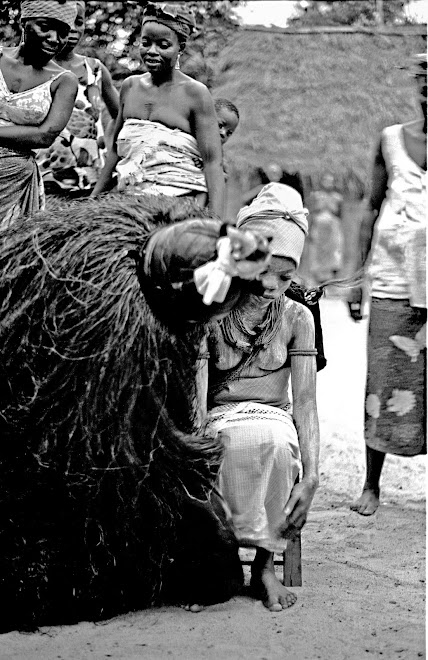




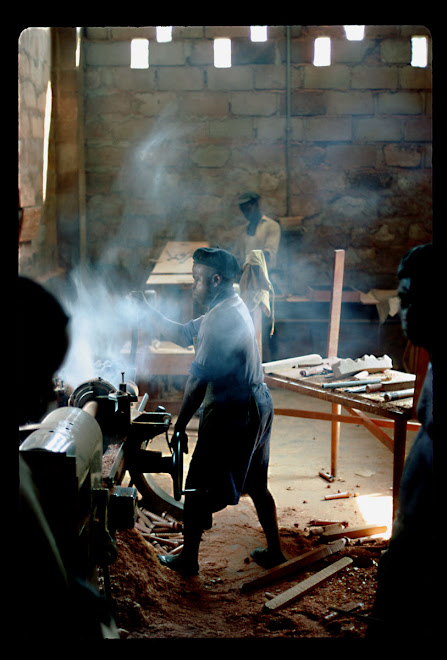


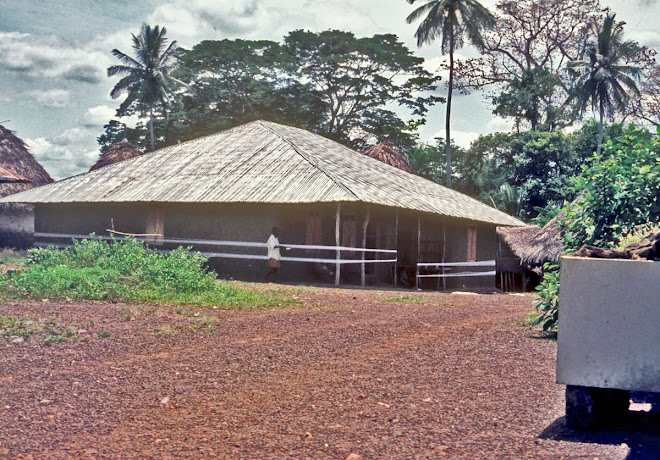
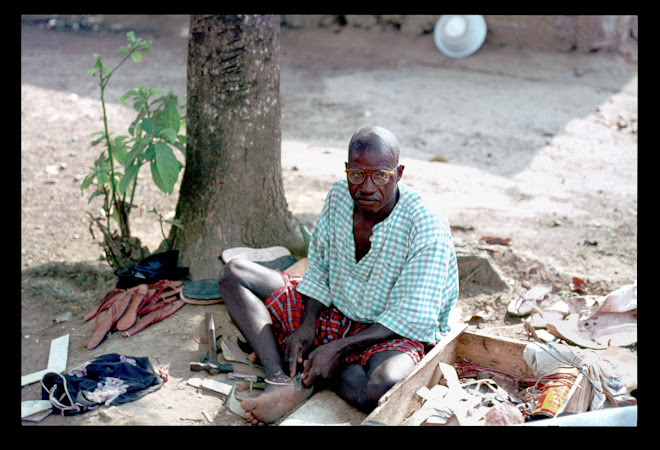
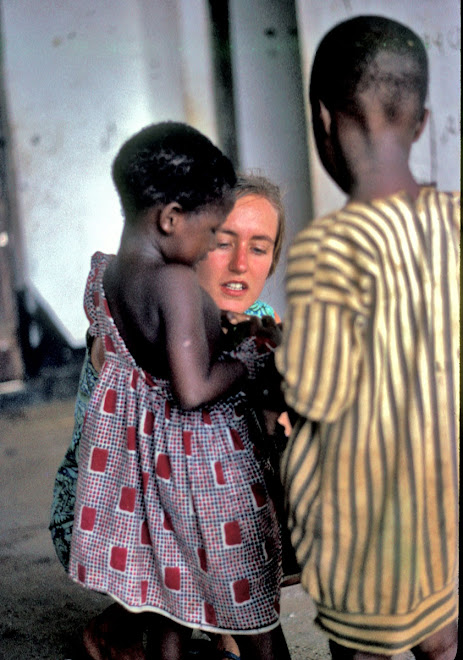
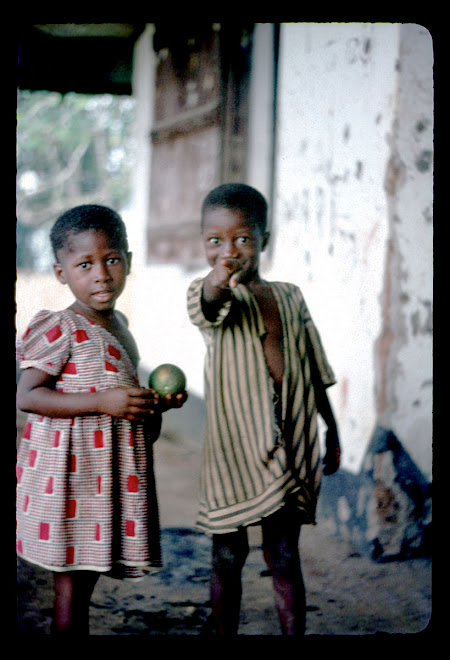
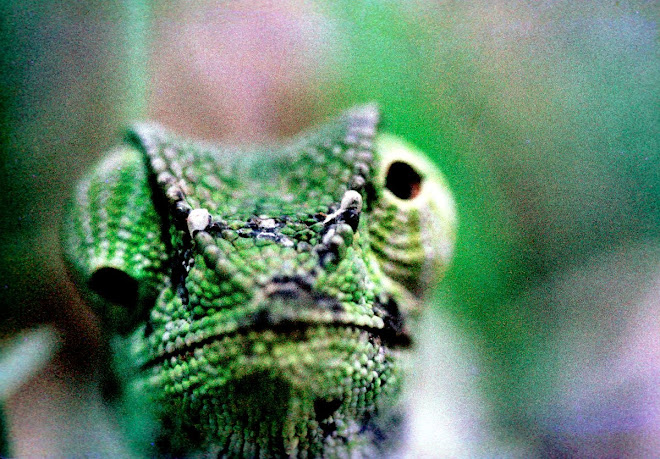

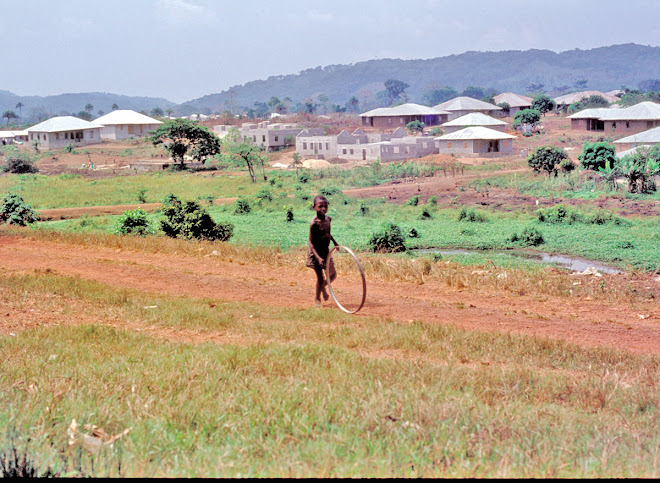
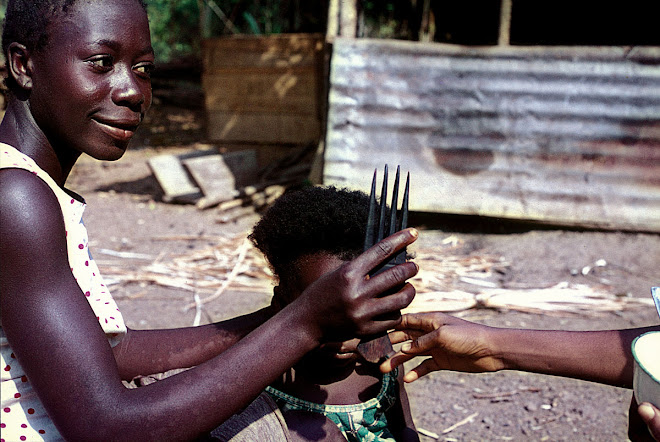
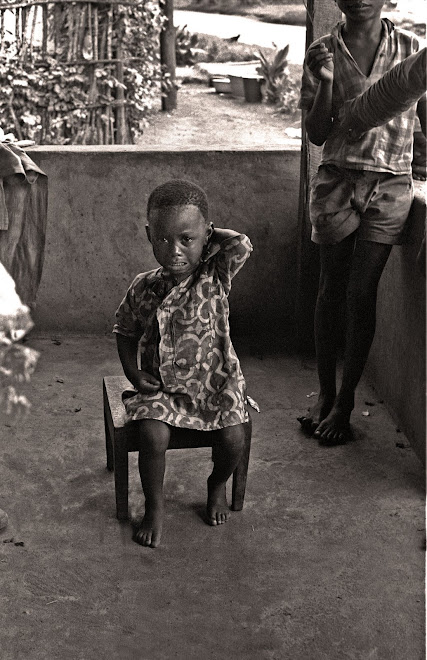
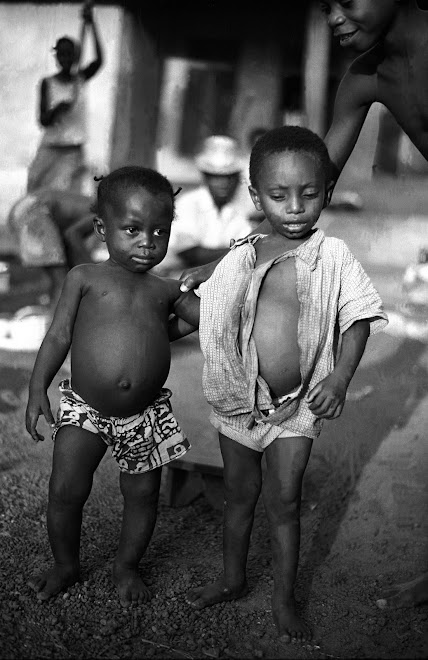
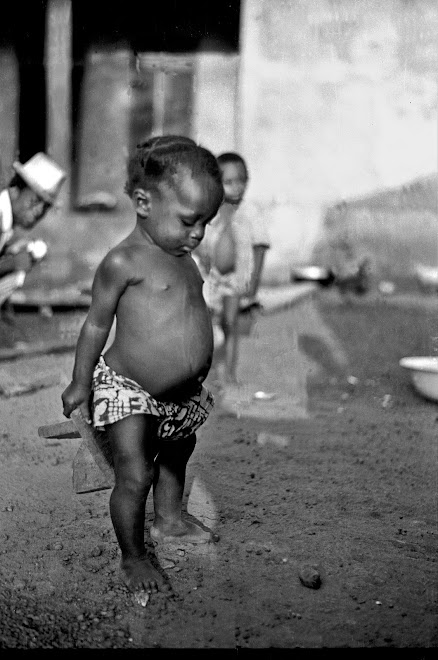
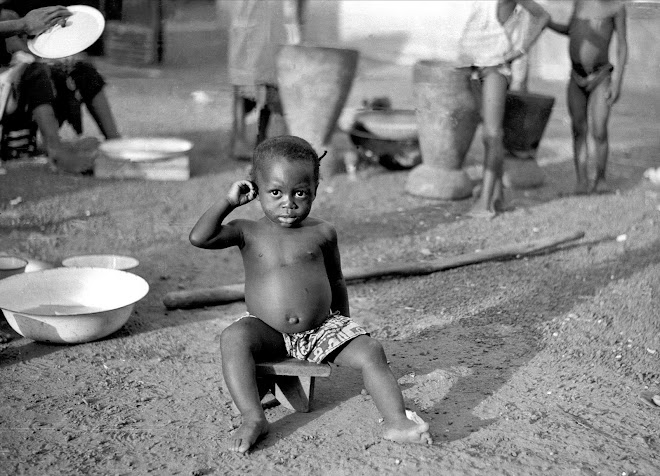
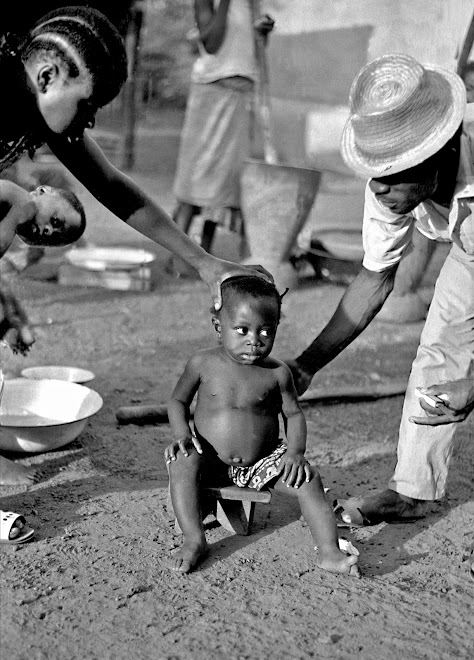
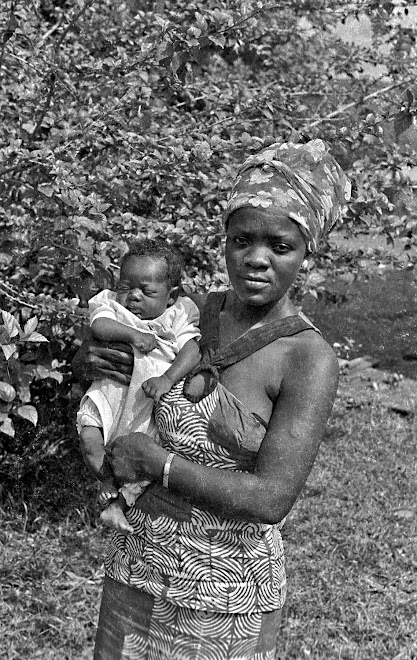-w--child.jpg)
